Zoleo vs inReach Messenger vs Mini 2 Best Satellite Comms 2024
Last Updated: April 7, 2024
Three Best Satellite Communicators of 2024
This buyer’s guide to the best satellite communicators sets out to compare the only three tier-1 options in the category; ZOLEO vs inReach Messenger vs inReach Mini 2. For most adventurers, you should choose between just these and ignore all of the rest.
Beyond the 10 essentials, a satellite communicator will provide a larger boost to your overall outdoor safety than any other gear available. These units offer peace of mind to your loved ones, and two-way communication with search and rescue teams, rangers, and medical professionals. Simply put, you should buy one, learn to use it, and bring it with you on every single foray into the wilderness.
Our guide is based on stats/feature comparison, meta study, and years of backcountry experience, both guiding and on personal trips around the world. We’ve used these satellite communicators to check-in, resolve emergencies, meet up in the mountains, and once even arrange a trailhead tow. These are the satellite communicator devices we prefer, and we’re sure you’ll like them!
Jump ahead for our performance criteria and pro tips. While you’re here, why not shop more backcountry electronics, such as the best backpacking battery packs or best headlamps.
You make Adventure Alan & Co possible. When purchasing through links on our site, we may earn an affiliate commission at no additional cost to you. Here’s why you can trust us.
How To Choose Between ZOLEO vs inReach Messenger vs Mini 2
For 2024 most backcountry adventurers should choose the Garmin inReach Messenger which narrowly surpasses ZOLEO in features and performance, while clearly besting Garmin inReach Mini 2 for the top slot. But in the grand scheme, all three are largely equal with similar features and usability, with only marginal differences between them.
- Choose Garmin inReach Messenger because it offers the best overall blend of performance, desirable features, usability, and value. Shop now.
- Choose ZOLEO Satellite Communicator because it is the most economical device, and comes with a user-friendly system and a dedicated phone number. Shop now.
- Choose Garmin inReach Mini 2 because among tier-1 options, it has the biggest screen, lightest weight, best standalone operability, and on-device navigation capabilities. But it gets a clear third place from us. Shop now.
If you already have any one of these three, there is no need to switch or upgrade to another at this time. But compared to the wider marketplace for satellite communicator devices, including offerings from ACR Bivy Stick, SPOT, Somewear, as well as the Garmin Explorer series, these three trounce the competition and upgrading may be advisable. Shop confidently knowing that whichever you choose, you really can’t go wrong! Jump ahead to read a direct comparison between each pair.
- Direct Comparison: ZOLEO vs inReach Messenger (↓)
- Direct Comparison: ZOLEO vs inReach Mini 2 (↓)
- Direct Comparison: inReach Messenger vs inReach Mini 2 (↓)
- Table Format: Devices, Features, Plans (↓)
Batteries for Recharging
A charger adds significant redundancy to your satellite communicator device, keeping it powered up for location tracking and prolonged heavy use during an emergency scenario. Compare to more chargers in our guide to the best battery pack. You will also use these devices to recharge your phone and headlamp throughout the trip.
Garmin inReach Messenger Satellite Communicator
Best Satellite Communicator
Garmin inReach Messenger is the latest contender in the satellite communicator genre, and offers best-in-class battery life, signal receptivity, and nearly all of the most desirable features, (except a dedicated phone number) for just $300 and four ounces. As such, it takes our top slot award, narrowly beating out ZOLEO and inReach Mini 2. Shop now.
- Price: $300
- Weight: 4.0 oz
- Average Battery Life: 672 hours (28 days)
- Pros: Best battery with reverse charging. Best antenna with best signal and messaging reliability. Good price. Lightweight. Basic on-device screen functionality. TracBack feature. Group messaging. Tri-network connectivity. Waterproof.
- Cons: Not the lightest weight, nor the least expensive. Not dedicated phone number. No on-device navigation. Tiny screen. No carabiner clip.
Features
Starting with the battery, Garmin inReach Messenger gives you a longer lifespan than any other satellite communicator, averaging 28 days on 10 minute tracking intervals. That’s double Mini 2, and more than triple ZOLEO. What’s more, it can even reverse charge, powering your phone back up in an emergency.
Next, we nod to the best-in-class signal receptivity for connection to the Iridium satellite network. Based on our backcountry testing, Garmin inReach Mini 2 previously held the top slot with the most reliable performance. That’s thanks to its 31.8 dBm helical antenna, now bested by Messenger’s 35.9 dBm flat panel antenna, which is also less bulky.
Due to the newly released Garmin Messenger App, the Messenger device (as well as Mini 2) gets tri-network connectivity. That is, the ability to flex between satellite, cellular, and wi-fi. If you are on either of the latter two, custom messages won’t count towards your plan’s limit. It also has a messaging leg up over ZOLEO with better weather forecasting and the ability to group chat.
While any screen is better than no screen (looking at you, ZOLEO), Messenger’s isn’t all that impressive and a step back in size compared to Mini 2. However, it does give operational cues as well as displaying inbound messages, battery %, weather forecast, time/date. You can even pick from a number of preset messages to send. It’s clunky, but does meet the very baseline bar for standalone operations.
Messenger’s screen also allows for use of the TracBack feature. Like Mini 2, it passively records your location, allowing you to retrace your steps should become lost. You can also export your track online so friends and family can follow your progress. But unlike Mini 2, it does not allow you to plug in a route to follow; we repeat, this is not a navigation device.
Verdict
Factoring in all of the above, Garmin inReach Messenger is the best all-around Satellite Communicator on the market right now with the best combination of desirable features and good stats for a reasonable price.
ZOLEO Satellite Communicator
Best Value Satellite Communicator
ZOLEO is the most economical satellite communicator device, and one of, if not the easiest to message with. We’ve used ZOLEO to great success across North America, South America, and Europe, both on personal trips and while guiding professionally. Our top pick, the inReach Messenger is largely based on the ZOLEO design. Shop now.
- Price: $200
- Weight: 5.3 oz
- Average Battery Life: 200 hours (8.3 days)
- Pros: Least expensive unit. Dedicated phone number. Tri-network connectivity. User-friendly messaging app. Great signal reliability. Multi-user device connectivity. Good-not-great battery life. Reasonably priced plan with economical plan-pausing. Waterproof. LEDs give operational cues.
- Cons: Heaviest, and largest unit. No text display, most operations require phone. No group messaging. Tracking functionality is basic. No navigation. Less power-user oriented features. Third best signal receptivity. Cheapest plan is slightly more expensive.
Features
Perhaps ZOLEO’s biggest standout feature is that you get a dedicated phone number for fully transparent SMS text messaging. This makes it the only unit that friends can send texts to without ever knowing that they are sending to you via satellite. In other words, there are no extra hoops to jump through. And it seamlessly sends/receives messages via cellular, WiFi and satellite (no message charge for cell and WiFi).
In our testing, ZOLEO was nearly as reliable at sending messages as inReach, despite being the least expensive unit, at just $200. It has both blinking lights and audible alerts from the unit that give you some idea of its operational status without having to look at your phone. There is a dedicated button to send check-in/location messages. So while it provides far less info and user operation capability directly from the unit itself,, it’s way ahead of similar screenless alternatives from Somewear and ACR Bivy Stick for operation without a phone.
ZOLEO recently added Location Share+ tracking, which was the second to last major feature it lacked vs Garmin inReach (but still no group chat). As such, while this is the heaviest among the tier 1 units, we feel its features, performance, user-friendliness, and low price are well worth a couple extra ounces.
Verdict
Despite the unassuming price tag, ZOLEO is an incredibly functional and user-friendly Sat Comm device with everything that most hikers will need. While the advent of inReach Messenger displaces it from the top slot in overall performance, it remains the only system where you get a dedicated phone number. We are pleased to award ZOLEO Best Value Satellite Communicator! Read more in our full length, ZOLEO Satellite Communicator Review.
Garmin inReach Mini 2 Satellite Communicator
Clear Third Place, But With Best Screen and Standalone Capabilities
The Garmin inReach Mini 2 is still the smallest and lightest tier-1 satellite communicator device and remains one of the best options on the market. However, while not strictly worse, it is generally inferior to the new Garmin inReach Messenger in most ways, and is now only worth considering if you place a high value on screen size, standalone device operability, and rudimentary navigation features to use in a last-resort scenario. Shop now.
- Price: $400
- Weight: 3.5 oz
- Average Battery Life: 336 hours (14 days)
- Pros: Lightest weight. Second best signal finding and message send reliability. Standalone device offers full, albeit clunky, functionality without phone. Tri-network connectivity. Phone app makes messaging easy. Advanced tracking with waypoints, routes, TracBack, and track sharing. Navigation capabilities. Great battery life. Group messaging. Detailed weather reports. Waterproof.
- Cons: Most expensive. No dedicated phone number. Small screen and nested menus make on-device-screen operation clunky and user-unfriendly.
Features
The Garmin inReach Mini 2 offers exceptional signal receptivity with 14 days of average battery life in a sleek package that is both the lightest and smallest in its class. It’s small-but-functional screen allows you to activate and use all of the device’s features without requiring a Bluetoothed phone, and the availability of preset messages drastically reduces typing. However, you will still want to use your phone for composing custom messages, and navigating the complex nested menus feels clunky and outdated.
Thanks to a firmware update, inReach Mini 2 can now take advantage of the Garmin Messenger app, which allows for tri-network connectivity, meaning messages sent over cell service or wi-fi don’t count towards your plan’s limit. It also allows for group messages, and the ability to communicate with email addresses, SMS, and over the Garmin Messenger app.
Did we mention the tracking and navigation weather features? This is where the inReach Mini 2 stands out. Firstly, it automatically records a user’s activity and passively stores their route so that it can be retraced. This is a feature called TracBack (and Messenger has it too). But unlike Messenger, you can download GPS tracks via the Explore app and upload them to the Mini 2. While massively inferior to using a phone app like Gaia GPS or paper topo maps, it does grant your system redundancy should all else fail
Verdict
Despite being surpassed in most ways (price, battery, antenna) by the new Garmin inReach Messenger, Garmin inReach Mini 2 is still an excellent and near-best-in-class satellite communicator relevant to power users, and those who care about screen size, standalone device functionality, and having a backup navigation system.
ZOLEO vs inReach Messenger
How to decide between Garmin inReach Messenger vs ZOLEO is likely what most folks will be wondering. The good news is that both are excellent, and you will likely be happy either way. That being said, while neither is strictly better than the other, the comparison below clearly point to Messenger having more advantages than ZOLEO. But how you weight those advantages according to your personal needs and preferences matters more than quantity of advantages, and ZOLEO is still a great option.
Favors ZOLEO vs inReach Messenger
- $100 less expensive
- Dedicated phone number
- More economical plan pausing
- Higher waterproof rating
Favors inReach Messenger vs ZOLEO
- Triple the battery life
- Capable of reverse charging
- 1.3 ounces lighter weight
- Allows group messaging
- Slightly better signal receptivity
- Basic screen gives standalone operability
- Slightly better weather forecasting
- TracBack feature, better track sharing
- Most basic plan is less expensive
- Released more recently
ZOLEO vs inReach Mini 2
The immediate question is why aren’t you choosing between Messenger vs ZOLEO? But the crux of Garmin inReach Mini 2 vs Zoleo is whether you would rather save $200 and a get dedicated ZOLEO phone number, or save two ounces of weight, and get device that is fully operational without a phone, with rudimentary navigation capabilities and and access to group messaging.
Until recently, we were definitely on team ZOLEO. But this comparison got a lot closer thanks to the new Garmin Messenger App along with a 2023 firmware update that granted inReach Mini 2 access to tri-network communication (switching between satellite, cellular, and wi-fi) – a huge boost in user-friendliness that was formerly a big separation point in favor of ZOLEO.
Favors ZOLEO vs inReach Mini 2
- $200 less expensive
- Dedicated phone number
- More economical plan pausing
- Higher waterproof rating
Favors inReach Mini 2 vs ZOLEO
- Double the battery life
- Two ounces lighter weight
- Allows group messaging
- Slightly better signal receptivity
- Screen give full standalone operability
- Basic navigation capabilities
- Better weather forecasting
- TracBack feature, better track sharing
- Most basic plan is less expensive
Garmin inReach Messenger vs Mini 2
If you’re deciding between Garmin inReach Messenger vs Mini 2, we feel that Messenger is the better option for nearly everyone because it’s less expensive and has a better battery. That being said, they share many of the same systems and are overall extremely similar. The biggest pull towards the Mini 2 is its slightly lighter weight, slightly bigger (but still tiny) screen for ease of standalone operation, and gps-track based navigation capabilities. But let’s be honest – you probably do most of your navigating on your phone and with paper maps anyway. We bet that only a very small percentage of owners have ever used their inReach Mini 2 to navigate.
Favors Garmin inReach Messenger vs Mini 2
- $100 less expensive
- Double the battery life
- Capable of reverse charging
- Slightly better antenna/signal receptivity
- Released more recently
Favors Garmin inReach Mini 2 vs Messenger
- 0.5 ounces lighter
- Larger screen
- Slightly superior standalone operability
- Rudimentary track-based navigation capabilities
- Better button placements.
ZOLEO vs inReach Device Comparison
*Mobile users rotate device for full-width table
| Price ($) | Weight (oz) | Avg Battery Life (days) | Reverse Charging | Waterproof | Screen With Basic Functionality | Best Signal Receptivity | |
| ZOLEO | 200 | 5.3 | 8.3 | no | IPX8 | No | 3rd |
| InReach Messenger | 300 | 4.0 | 14 | yes | IPX7 | Yes | 1st |
| InReach Mini 2 | 400 | 3.5 | 28 | no | IPX7 | Yes | 2nd |
ZOLEO vs inReach Feature Comparison
*Mobile users rotate device for full-width table
| S.O.S. & 2-way messaging | Bluetooth to Phone App | Location Tracking Weather Forecast | Tri Network: |
Group Messages
|
Basic
Navigation
|
Dedicated Phone Number
|
|
| ZOLEO | yes | yes | yes | Yes | No | No | Yes |
| inReach Messenger | yes | yes | yes | Yes | Yes | No | No |
| inReach Mini 2 | yes | yes | yes | Yes | Yes | Yes | No |
ZOLEO vs inReach Subscription Plan Comparison
*Mobile users rotate device for full-width table
| Monthly Rate | Activation Fee | Suspended Monthly Rate + Reactivate Fee | SOS & Check-in Messages | Custom Messages | Cost per additional message | Location Sharing | |
| ZOLEO Basic (Monthly) | 20 | 20 | 4 + 0 | unlimited | 25 | 0.5 |
$6/Month unlimited
|
| Zoleo In Touch (Monthly) | 35 | 20 | 4 + 0 | unlimited | 250 | 0.5 |
$6/Month unlimited
|
| Zoleo Unlimted (Monthly) | 50 | 20 | 4 + 0 | unlimited | unlimited | N/A |
$6/Month unlimited
|
| inReach Safety (Monthly) | 15 | 35 | 0+35 | unlimited | 10 | 0.5 | $.10 per share |
| inReach Safety (Annual) | 12 | 30 | N/A | unlimited | 10 | 0.5 | $.10 per share |
| inReach Recreation (Monthly) | 35 | 35 | 0+35 | unlimited | 40 | 0.5 | $.10 per share |
| inReach Recreation (Annual) | 25 | 30 | N/A | unlimited | 40 | 0.5 | $.10 per share |
| inReach Expedition (Monthly) | 65 | 35 | 0+35 | unlimited | unlimited | N/A | Free |
| inReach Expedition (Annual) | 50 | 30 | N/A | unlimited | unlimited | N/A | Free |
Performance Criteria for the Best Satellite Communicators
Pro Tips and Performance Criteria By Alan Dixon
To date, no satellite communicator device has every single desirable feature, although inReach Messenger, inReach Mini, and ZOLEO come closest. But with some improvements to their phone apps and some software/firmware improvements, Bivy Stick and Somewear could easily close the gap.
- SOS capabilities [essential capability]
- 2-way messaging [essential capability]
- Pre-set location sends to contacts [essential capability, custom location sends a plus].
- Tri-network (satellite, cellular, wi-fi) communication for messaging, location sends, and tracking [highly desirable]
- Multi-day tracking, web viewable, with individually saved tracks & ability to export tracks to a .gpx file [highly desirable, nearing essential capability]
- Group messaging [highly desirable]
- Good battery life [essential capability]
- Buttons and signals on unit capable of basic control and understanding of the unit’s status and what it’s doing [essential capability]
- Display screen [highly desirable]
- Navigation capabilities [marginally desirably]
- Good antenna with connection Iridium Network [essential capability]
- Lightweight, 3-6 oz [very highly desirable]
- Dedicated phone number [highly desirable]
How To Best Use A Satellite Communicator
Bring a Backup Battery!
It’s a critical safety precaution to make sure your satellite communicator is always available for use (especially if you are using it in tracking mode during a trip). So Bring an external USB battery in the range of 6,000 to 10,000 mAh. Anything in the 6,000 range should cover day trips up to long weekends. Anything 10,000 or higher is good for a week of adventuring. And those estimates are conservative, assuming you aren’t going overboard on ues of electronics.
BioLite Charge 20
5.3 oz | $40
We like the BioLite Charge 20 because it is very lightweight, durable, grippy, and well-made. It offers 6,000 mAh, which is enough for 1.5 phone charges – perfect for anything from a day hike to a three-day weekend backpack. It charges quickly, and can charge multiple device at once.
Nitecore NB10000 Gen 2
5.3 oz | $60
With an impressive power-to-weight ratio, the Nitecore NB10000 Gen 2 has better stats than any other power bank. It offers two or more complete phone recharges for only 5.3 ounces. It’s the most ultralight unit in the 10k mAh-class, and certainly the best overall performer. What’s more, it can charge two devices at once, includes a USB-C port, and gets rave user reviews across the board. It even offers a low current mode for charging smaller devices. Did we mention that its carbon fiber casing is also water resistant (IPX5), and puncture, impact, and abrasion resistant? Carbon fiber also helps prolong the battery life in cold temperatures.
Anker Powercore 10000 Battery Charger
6.3 oz | $20
Weighing just 6.3 oz, this powerhouse, rechargeable USB battery can charge most phones multiple times with 10,000mAh— great for use on trips longer than three days. And unlike many “smart” batteries, the Anker Powercore 10,000 will detect & charge low drain devices like a fitbit or smart watches.
Pre-Trip Testing Your Satellite Communicator
Test your unit with your emergency contact(s) before leaving for your trip:
- Do a quick pre-trip, test hike and make sure your emergency contacts can see both your “location messages” and “tracking waypoints” on the tracking webpage.
- Send out your basic message types, like OK, Custom and Help (SPOT and inReach) and make sure that each of your emergency contacts receives them
- Make sure your emergency contacts can reply to your text messages and independently send texts to you. Again this is best done with test texts before you leave on your trip
- Battery drain test. Put your Satellite Communicator in tracking mode if it has one and take it for a 4-8 hour hike on the weekend. Send a few locations and messages along the way. After the hike, check the remaining battery percentage– do the calculations on % battery drain per hour. Use this to estimate whether you’ll need a recharging battery on your trip. See Batteries and Re-charging below.
Account Management for your Satellite Communicator
- If you have a limited text plan, know that all incoming messages count towards your plan total—none are free. So let your contacts know to only reply to text messages when needed. If 2-3 people reply to each message it can quickly add up.
- Consider giving a trusted person (knowledgeable about the account) access to your account. See Trip Plan for an example.
Agree on Meaning of Messages and What to Do
- Make sure that you and your emergency contacts know/agree on the meaning of the basic message types, like OK, Custom and Help (SPOT and inReach). And that they know what to do for Custom and Help messages. See Trip Plan for examples.
- Have an agreement on what-to-do when tracking points stop and do not resume in an agreed upon time (i.e. within a 12-hour time period).
- Have an agreement on what to do when the Satellite Communicator “goes completely dead,” i.e. no tracking points and no messages. See Trip Plan for examples.
All of the above is best done in a Trip Plan. Here is a link to Template Trip Plan Document that you can fill out and use: Full Trip Plan for Backpacking.
Tracking Mode for Satellite Communicators
Our suggestion is to use the tracking mode (10 minute interval seems about best). If nothing else, at the end of your trip you’ll have a nice map of your route and your friends may enjoy following your progress and adventures real-time.
Most important, Tracking Mode can alert your emergency contact of a problem even if you can’t.
- In a bad accident (especially when off-trail and solo), you may be severely injured (i.e. a serious fall, getting struck by a tree limb, etc.) such that you can’t activate the SOS function of your device. Your tracking (bread crumb trail) will let your emergency contact monitoring the trip (and SAR personnel) know your last known location within 10 minutes.
- Your lack of momentum will tip off your emergency contact that something is not right and
- It will greatly accelerate locating and getting help to you.
Avoid turning the Satellite Communicator off at breaks
- (my experience is that I inevitably forget to turn it back on).
- When in tracking mode, carry your inReach or SPOT in the correct position for best transmission (see owner’s manual).
- For the inReach Mini and Bivy Stick (and other devices with a visible antenna sticking out this is with the antenna pointing towards the sky and free of your body or other obstructions.
- For a flat Satellite Communicator without a visible antenna (inReach Messenger, ZOLEO, Somewear, SPOT, etc.), the device should be oriented so the face is pointing to the sky (unit horizontal). This is difficult to do while hiking.
- If you use the clip provided with the unit, it usually ends up hanging vertically (face of the unit pointing away from your pack/body). While not optimal, it seems to work for many people.
Improving Satellite Communicator Performance in Difficult Reception Areas
Improving performance in difficult reception areas boils down to increasing your view of the sky. That is, increasing your line-of-sight/unobstructed-sky to the satellites you are trying to reach, along with proper antenna orientation. In other words, your transmission reliability may be impaired if you can’t see a good portion of the sky (e.g. heavy trees, deep canyons, etc.).
- This is especially important for SPOT 1-way units like the Gen 3 because in bad reception areas, you will get no indication of whether you have successfully transmitted messages.
- Make sure your antenna is properly oriented (see end of Tracking Mode above). This is especially important in difficult receptions areas!
- Physically move to where you can get a larger, unobstructed portion of the sky. Try walking to a large clearing in the trees. Or moving to a wider point in a canyon with more view of the sky. You may even need to hike up the canyon wall some to increase the percentage of sky you can see. I had to do this once in the Grand Canyon to initiate a helicopter rescue.
Best Satellite Communicator Limitations
Sometimes a timely rescue is not possible. A Trip Plan and/or a Satellite Communicator is not the solution to everything. I have been in some extremely bad situations where rescue was not feasible even if I had sent out an SOS. As they say, the best rescue is self-rescue. And to state the obvious, Goal One is not needing rescue in the first place. So be sensible and safe out there.
Finally, a Satellite Communicator should never be considered a license to take unnecessary risks.
Watch Adventure Alan Compare The Best Satellite Communicator Devices of 2020
Conclusion: ZOLEO vs inReach Messenger vs Mini 2
Thank you for reading our guide to the three best satellite communicator devices: Zoleo vs inReach Messenger vs inReach Mini. We’re quite confident that these models are best-in-class at this time, and that your experience will reflect this. Happy hiking and stay safe out there!
Leave a Reply
Want to join the discussion?Feel free to contribute!

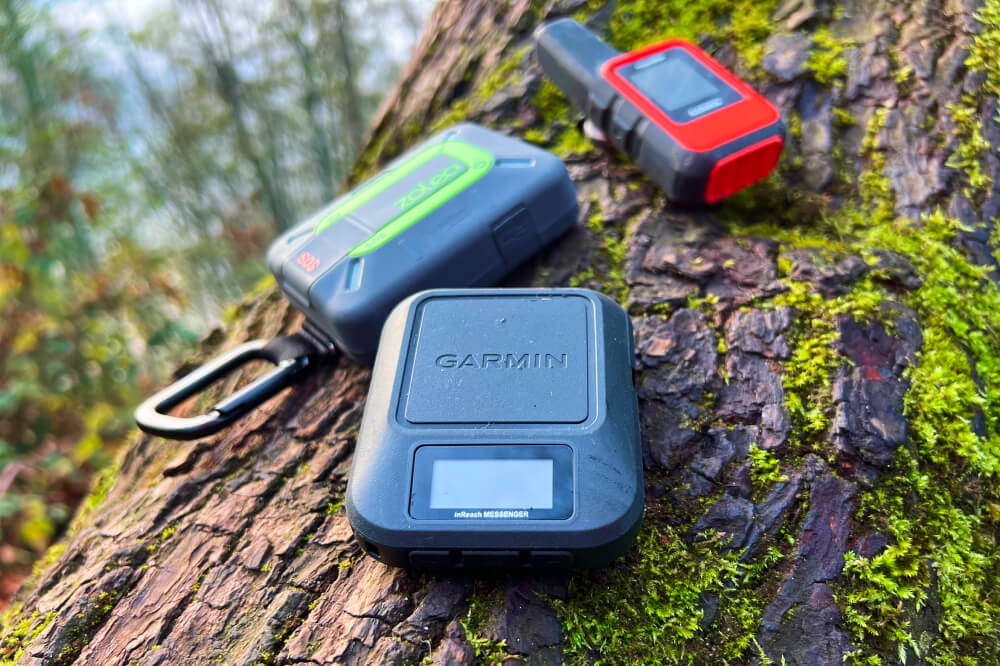
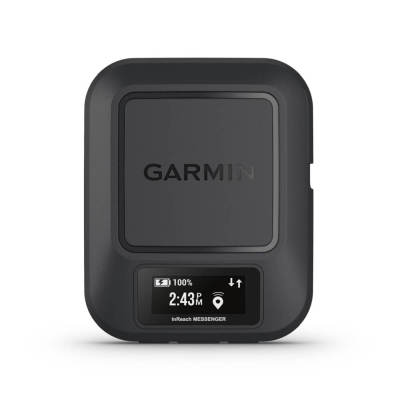
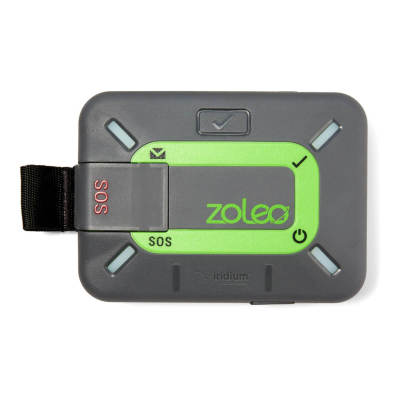
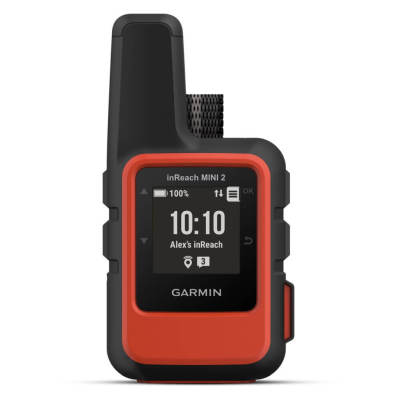
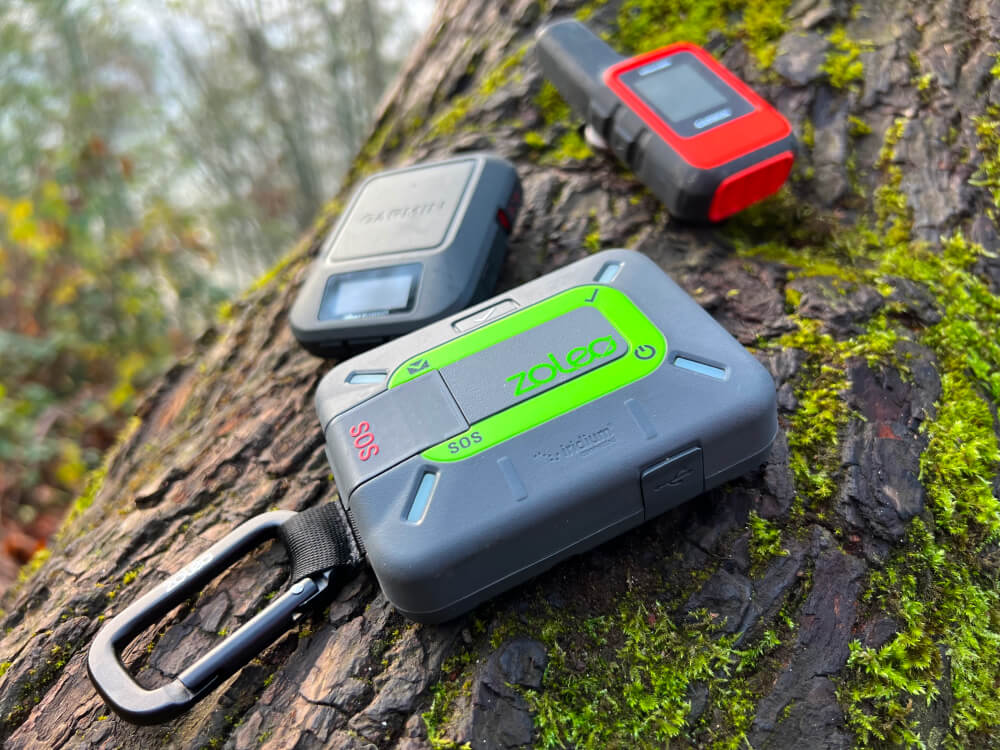
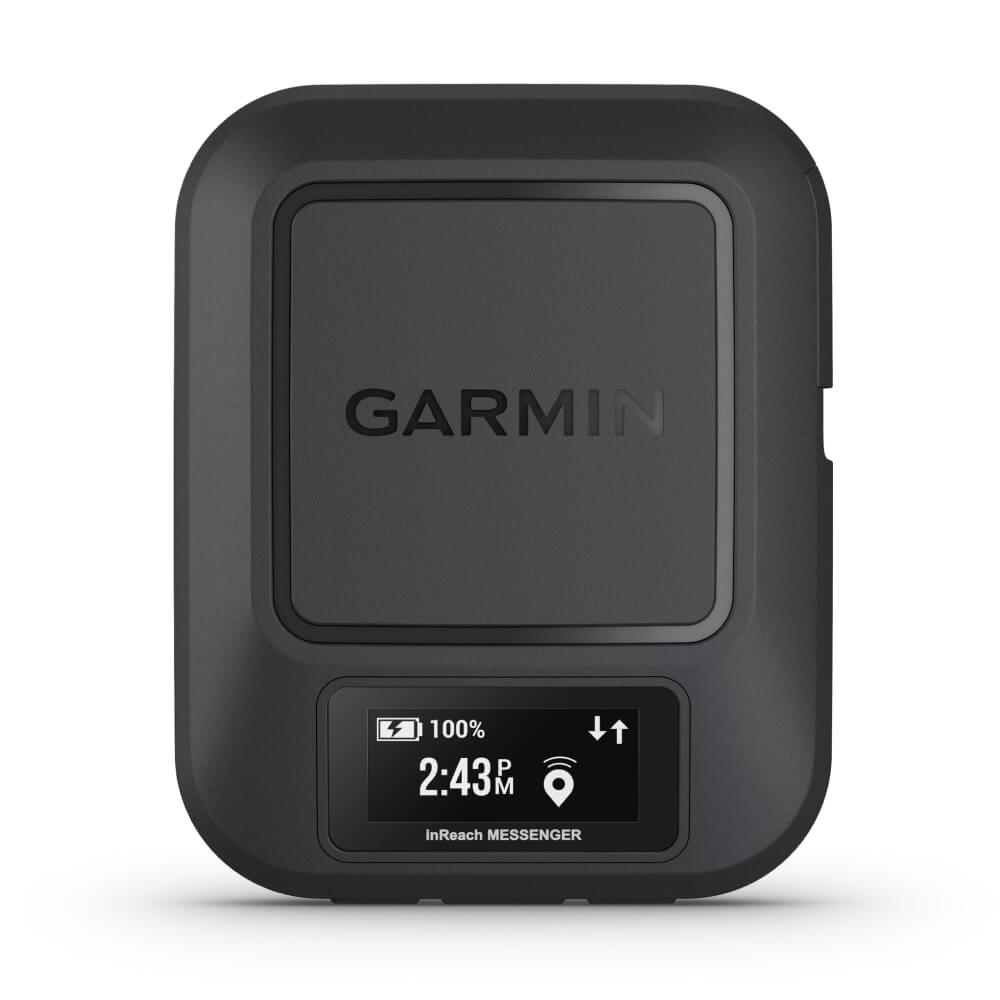
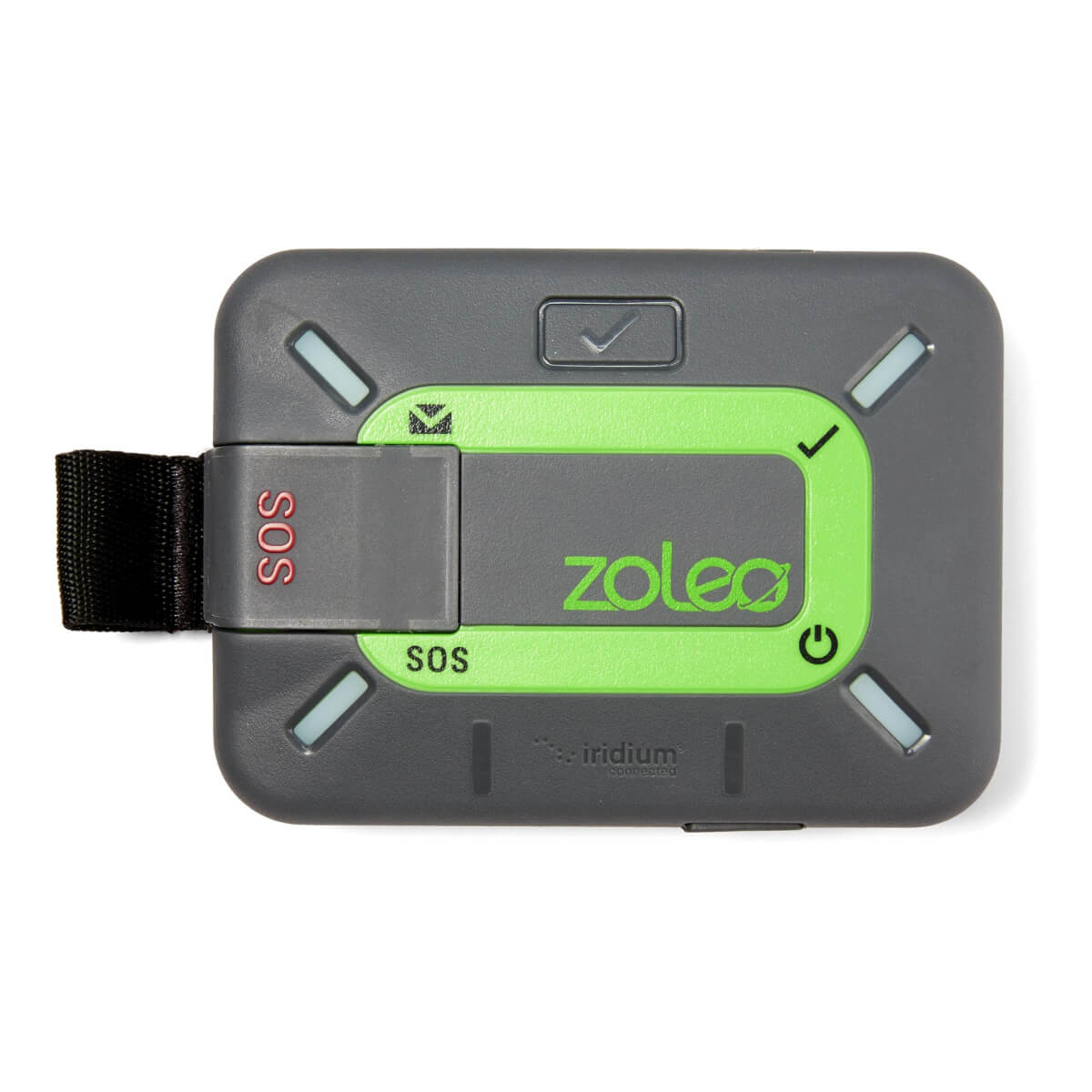
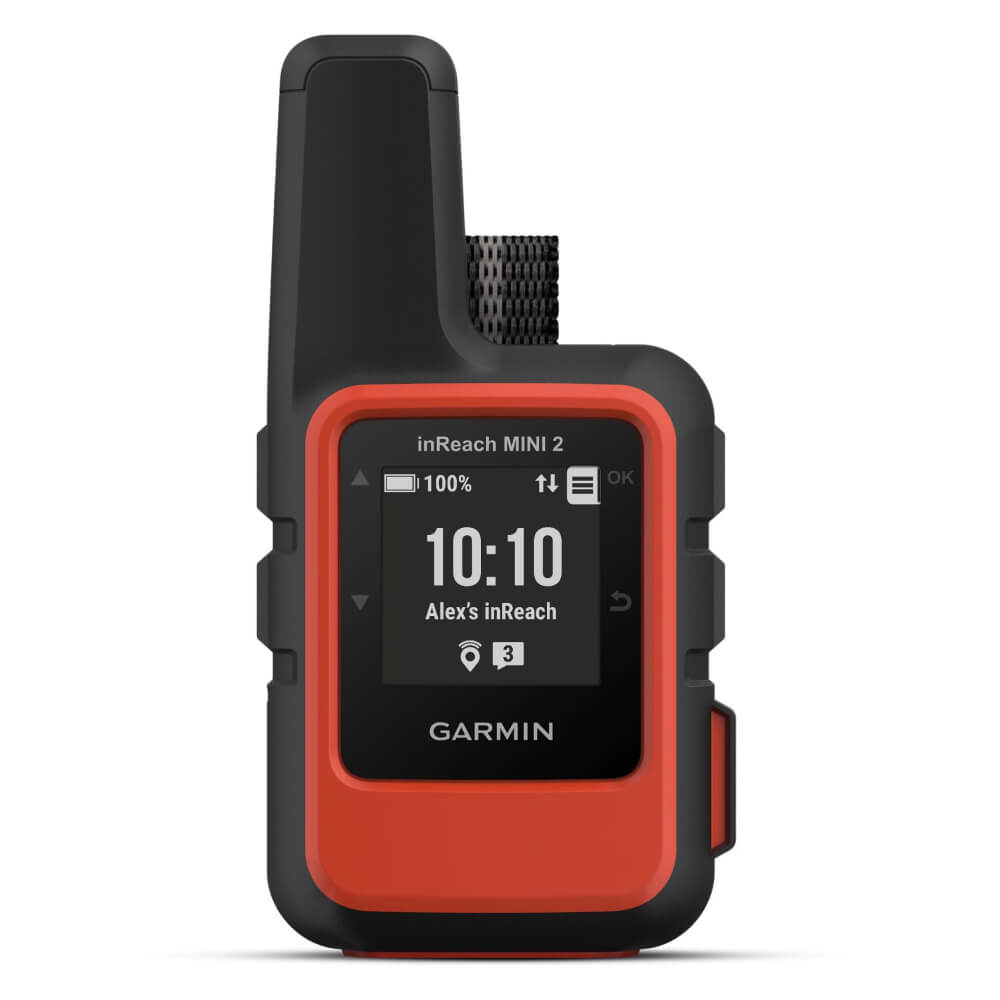
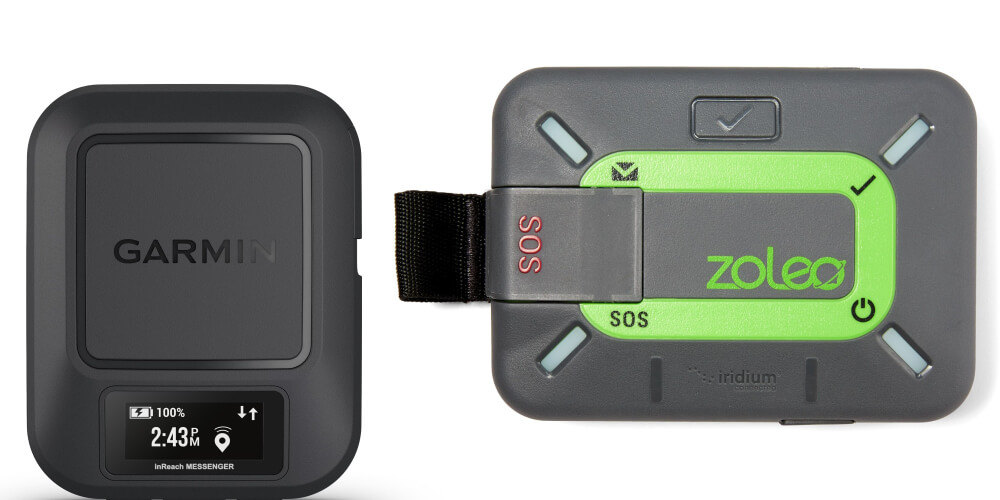
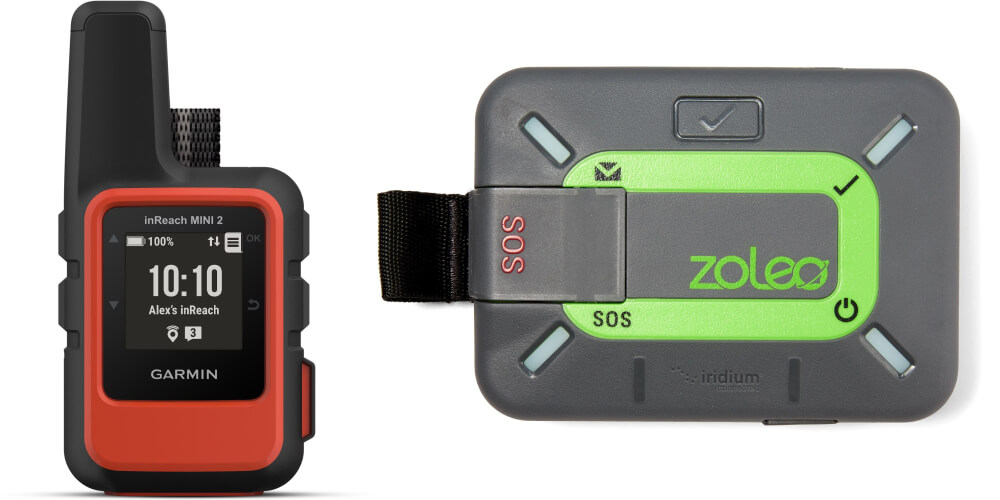
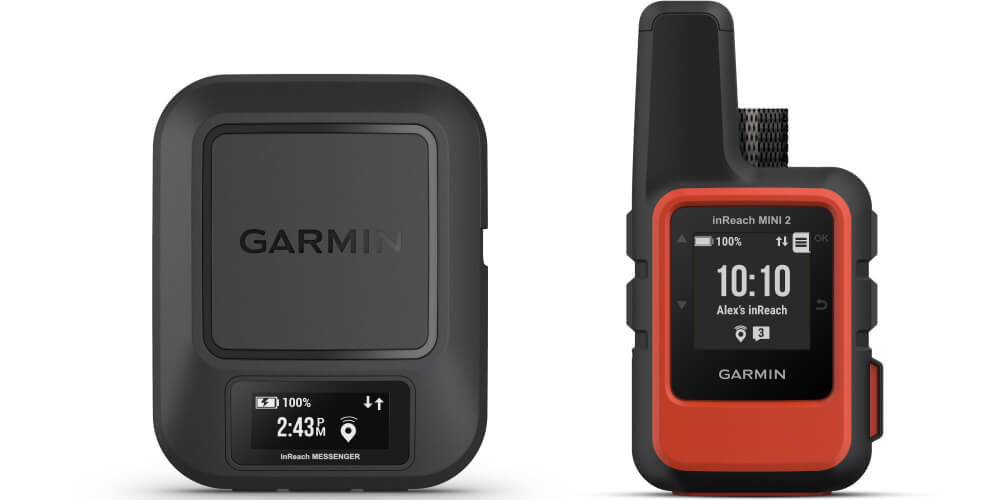
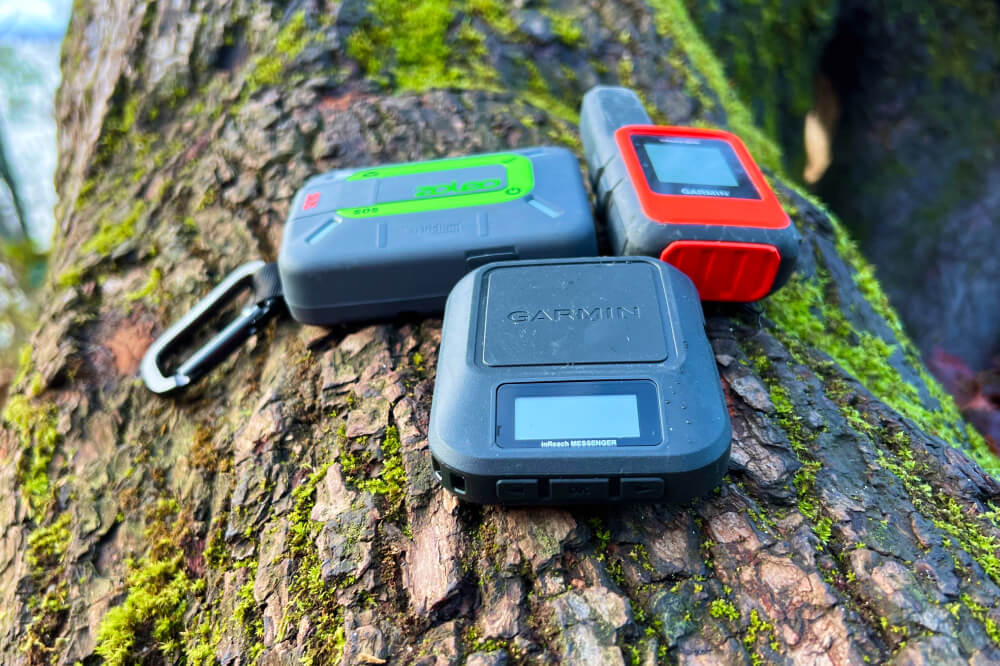
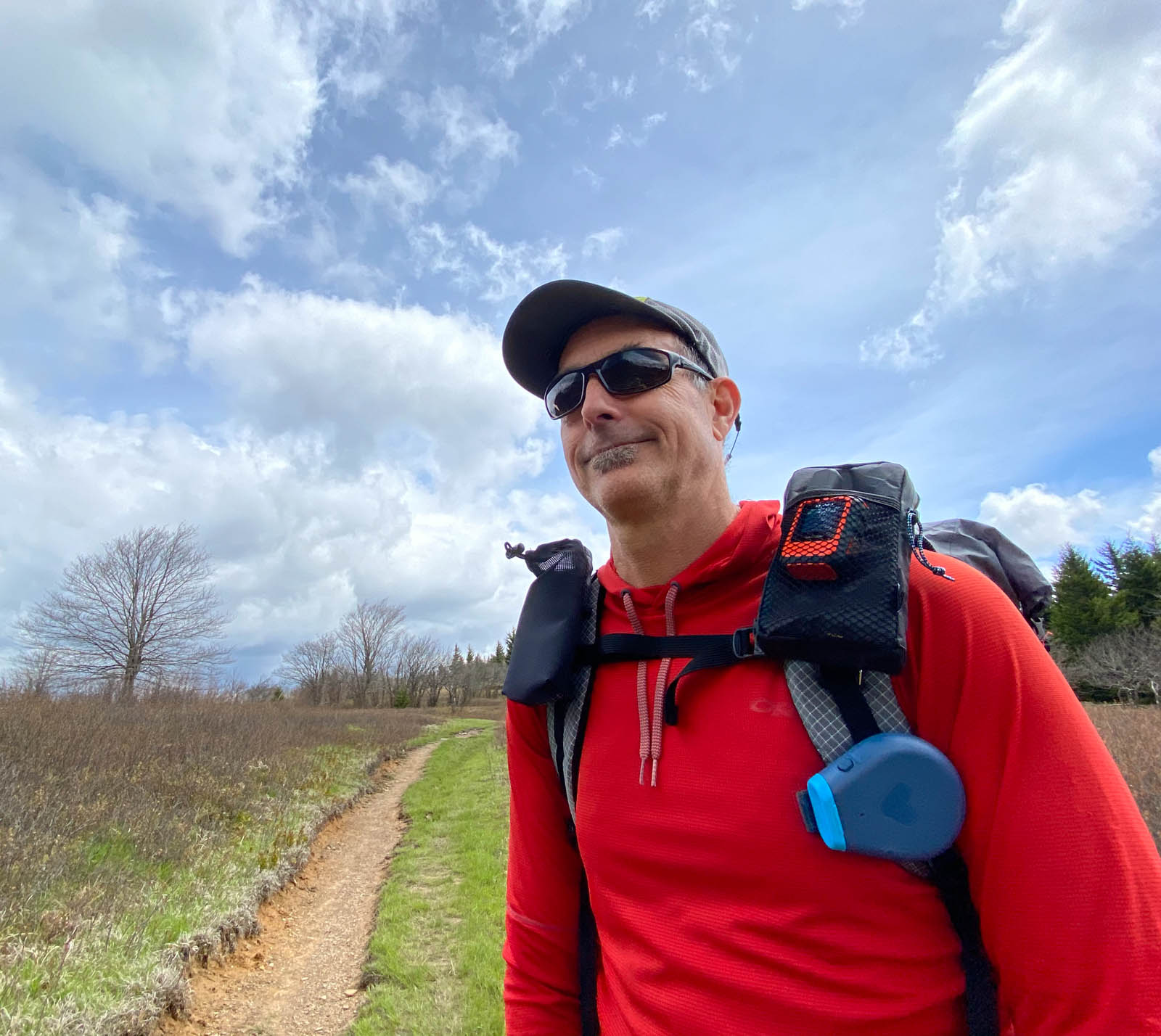
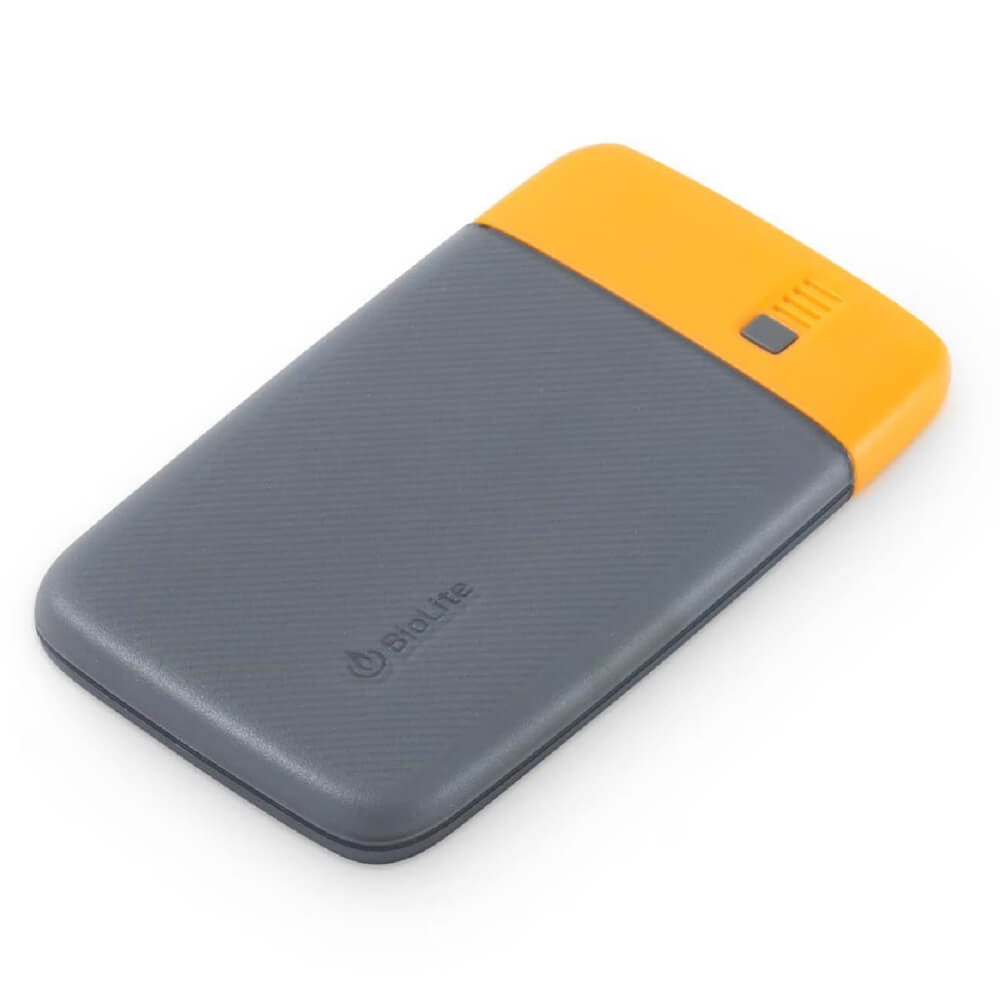
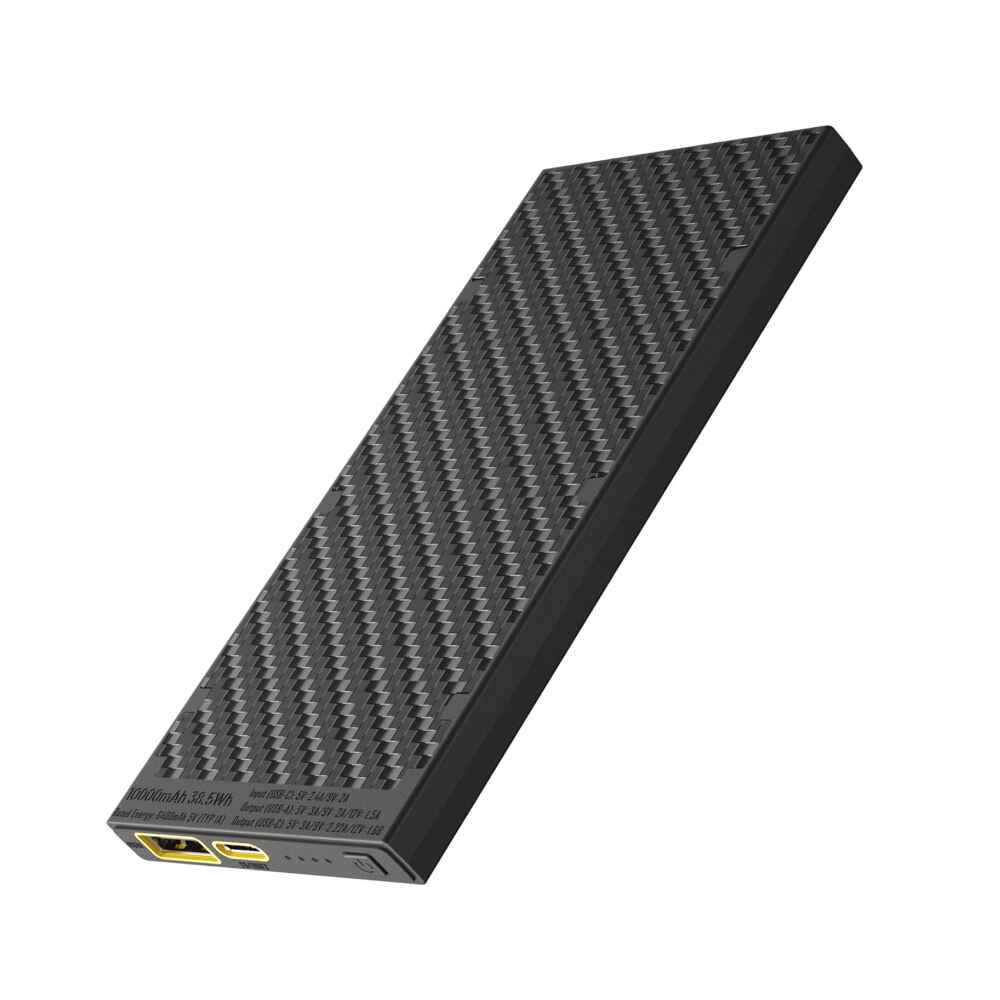
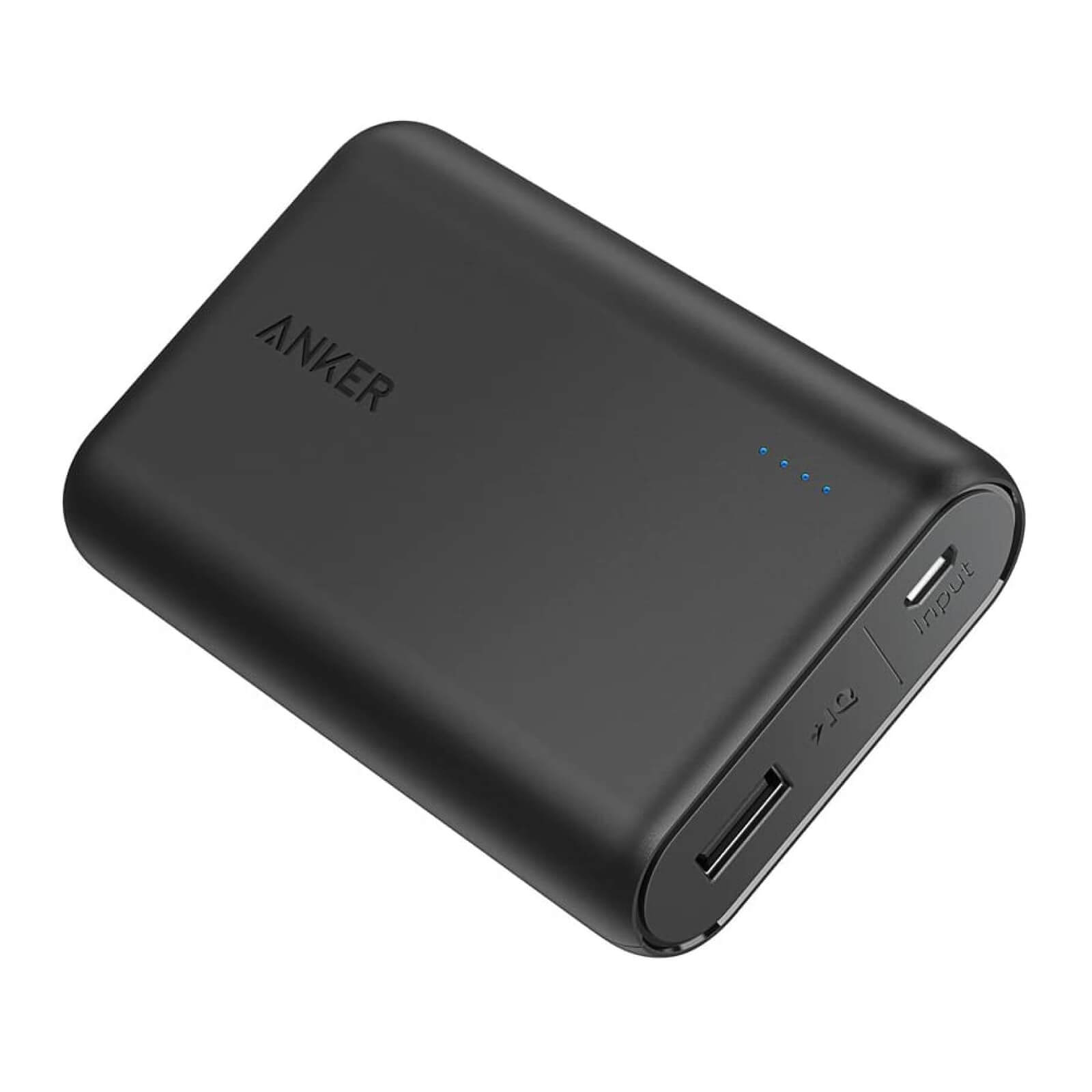
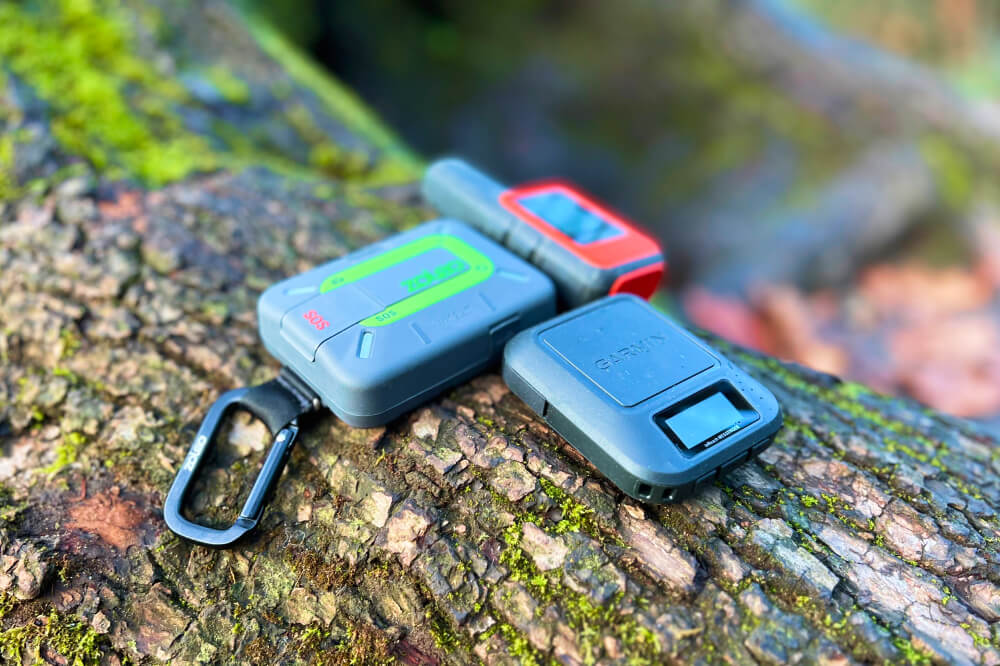
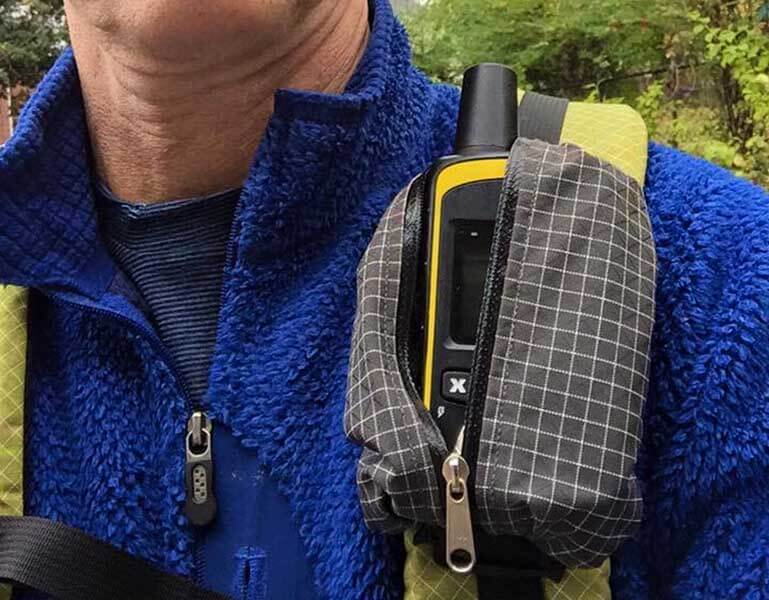
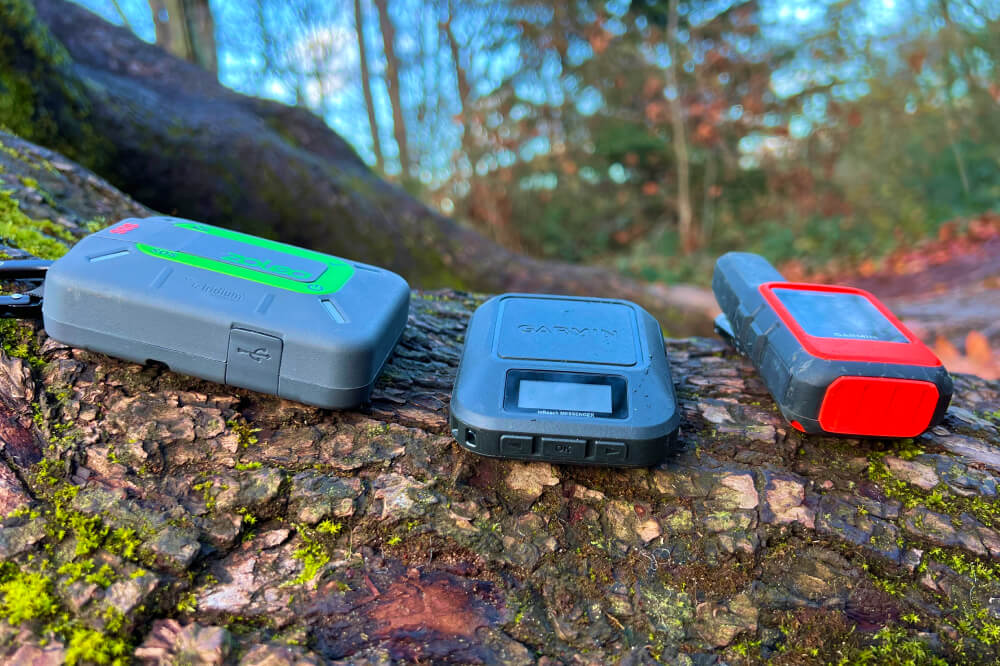
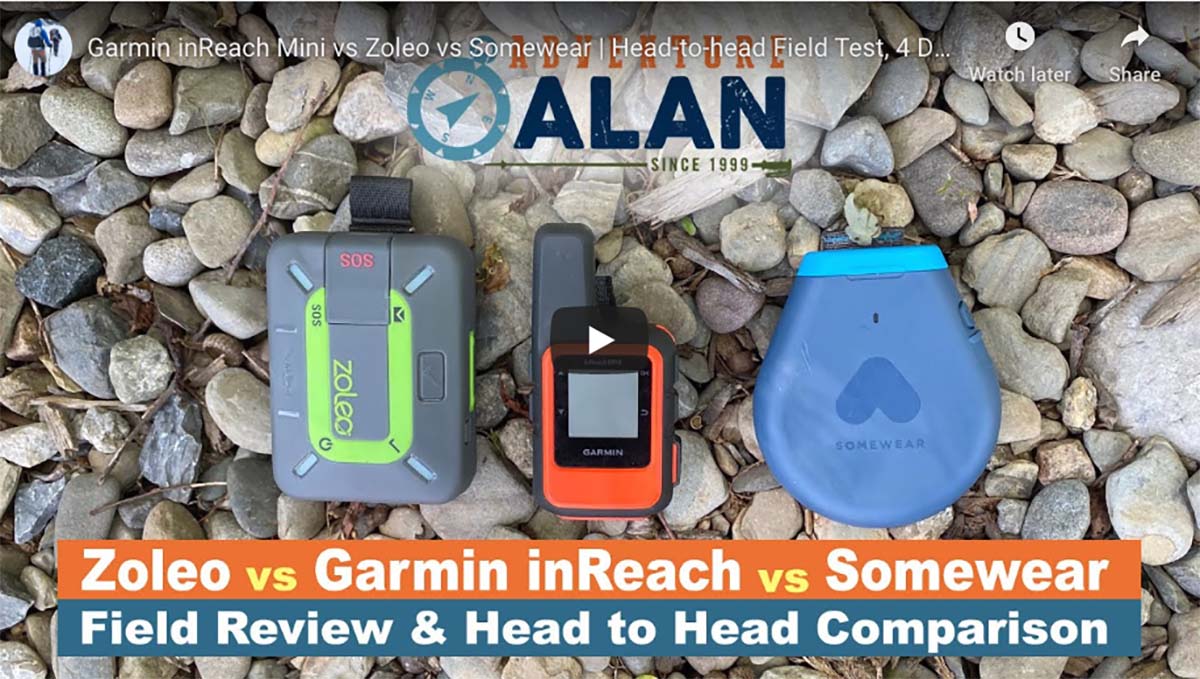


I have had a Zoleo for about a year. I have no complaints about registration or setup. It is very easy to use. It has operated well in the back country. I have read unbiased comparisons with Zoleo and Garmin being operationally close to being the same. I have 3 friends that are experienced backpackers and all have said the Garmin can be tuff to learn. Im 68 and the Zoleo was easy. It is said that the Garmin can operate on its own without the use of a phone BUT who goes in the backcountry without a phone right. Not too many.
Muchas gracias a todos.
Que me recomendáis para hacer navegación de altura incluyendo navegación oceánica en el Atlántico?
Muchas gracias.
¡Hola! Nuestro enfoque en este artículo comparativo está en el senderismo y el mochilero. Desafortunadamente, ni Alan ni yo estamos calificados para abordar la seguridad de la navegación oceánica. ¡Buena suerte en tu búsqueda y feliz navegación!
I’m seeing on FB forums that Zoleo’s rescue insurance is $300-$400/yr while Garmin offers it for $40/yr for $100K coverage in the event of a helicopter rescue. That is likely a deal breaker for many and another reason to go with a Garmin. Plus Zoleo uses the older USB plug to charge while Garmin uses USB-C so potentially one less charging cable to pack. Any credible rumor of a Zoleo V2 coming since the device is about 4 years old? In fairness to Zoleo you didn’t mention their new medical assist feature which is a great feature in their favor. Great article.
Thanks! Interesting angle to compare! Yes, Garmin offers SAR insurance for $40 per year. Not sure ZOLEO even offers an insurance bundle, but if you don’t like what they offer, you could probably find a 3rd party plan.
Agreed on USB-C. There’s still plenty of micro-USB charge ports floating around on headlamps and other smaller devices though. We do not have a scoop or insider info on new ZOLEO devices.
In addition to hiking, my husband also scuba dives and I see the Inreach Mini 2 has a dive casing & this would allow him to SOS at surface or provide location to his boat in case he”s difficult to find due to current/drift. Is the Inreach Mini 2 the best option of these 3 devices to use secondarily as an emergency signal for a diver? Thanks so much!
Hello!
Great question – Unfortunately, not one we’re qualified to answer. Good luck on your research though, and wishing y’all many a safe dive.
Hi
I’m looking for one that we can use only in an emergency when we’re in an area with no cellular service to call 911.
Any recommendations please?
Thanks
The inReach Mini, Somwear, and Zoleo are all good. If you are on a budget and don’t mind a bit of bulk and weight, the Zoleo is likely the best bang for the buck. And we like the dedicated phone number and seamless transition from WiFi, to cellular data, to satellite without you having to worry or keep track of it. Best, -alan
Alan, Elizabete:
Take a look at the BivyStick. Same weight as the iReach Mini. Needs a phone to compose messages, but checkins and SOS can be sent using buttons on the device. ACR has cut the price to $200!
But the most important thing is the data plan. Lowest is $18 for 20 credits, good for 30 days. No other fees. Checkins are free. So it might be the best device for intermittent users who would use it mainly for checkins to show their significant other where they are on a multi-day trip.
Adrian and Elizabete,
We just finished testing the new Bivy Stick in this guide. It has tons of promise and we like it. It’s still a bit rough around the edges and has a few bugs, so it just missed being a top pick. That being said there is a good chance that in 6 months it could go toe to toe with the top units. Warmest, -alan
Great in-depth review. I’m going back and forth between the inReach and Zoleo. Mainly day trips for me that include areas of no cell service. In your post you say the Zoleo has the lowest subscription rate. I’m not seeing that unless you go with the most expensive plan on the inReach. Am I missing something? Thanks.
Kevin, not sure what you are looking at, but the middle plan which is what most folks would use is far cheaper/message on Zoleo. 40 messages for $35 on inReach so around $1.00 per message. For Zoleo you get 250 messages for $35 so around $0.25 per message. BUT since the plans are nowhere near the same, it is impossible to make a direct comparison. E.g. the $40 Garmin plan includes free pre-set messages (3 basic ones) and unlimited tracking (On Zoleo every message comes out of your monthly allocation). And the Zoleo plan will not let you suspen for the first three months, but but Garmin has and annual subscriptoin fee in addition to monthly plan costs, etc., etc. Best, -alan
Alan – now I get it. I was just looking at total cost where, I believe, you look at what you get for your money. Thanks for the clarification.
Hey Alan,
I ended up going with the Somewear. Got it last night and will try it out today. Question: Did this thing go to sleep on you? I try to check the satellite coverage and it often shows something like “Will check again in 20 minutes”. There’s also an icon with a half moon and “z” which make me think it’s asleep. I can’t seem to wake it and since there is no manual I’m stumped. I have an email off to Somewear but still await there response. Thanks.
Alan,
I figured out the sleep thing. I’m enjoying the device. It’s used mainly while I’m doing trail maintenance on the Finger Lakes Trail in New York State. I’m in and out of cell service.
What do you think about the method of securing the Somewear to your pack? As soon as I got it I figured there could be trouble with it popping off. After hooking it to my pack I added a carabiner between it and the pack. Sure enough, when I took my pack off today the Somewear was hanging by the carabiner. Other than that I’m really happy with my purchase.
I believe BivyStick is a product that should be included here. They have been in the market roughly as long or longer than the Somewear and Zoleo (and are at least doing well enough to release a re-designed 2nd gen device).
The huge selling point for me is the billing is MUCH more user friendly; roughtly the same $-per-message _except_ there are no contracts or activation/REactivation fees. I have the InReach Mini, and it’s a great device, but the billing really leaves a bad taste in ones mouth when you have to choose between less-than-friendly options for intermittent use.
Hi Foo, the thing that was holding back our consideration of the BivyStick was it’s 7.3 oz weight (this is a ultralight backpacking site). Given it does not have a screen and has a high $360 purchase cost we felt there were many better options out there. That being said the new “Bivy Stick Blue – Satellite Communicator” at 3.35 oz is the lightest of the lot and could change things. What remains to be seen is how the antenna configuration works for such a small unit. Only testing in dense tree cover and in deep canyons will tell if it has the same message send/receive reliability of the inReach. We are currently awaiting an evaluation Bivy Stick Blue to find out that as well as battery life for such a small unit. Best, -alan
I was concerned by the weight of the BivyStick Orange as well… though I suppose if it really eliminated the need to carry a separate powerbank, that would more than make up for it… guessing based on your decision not to include it (and BivyStick’s decision to go light for the new Blue) that isn’t as good of an idea in practice as it sounds on paper?
Only testing will tell. I am in line to get one of the first BivyStick Blues. There was a slight delay in production but expecting it soon. Stay tuned. (Oh, and I for one, prefer the flexibility of having my USB battery separate from all my components.) Best, -a
Will look forward to seeing the update on BivyStick Blue when you’re able to test it – I will be returning my Zoleo (largely because of the high cost even when plans are paused, given I’m not able to really adventure far for much of the year) and put off my purchase until I can either compare BivyStick Blue reviews to Somewear and/or snag one of them on sale…
Re: BivyStick Orange, I think I’d also be concerned about possibly draining my sat Messenger by charging another less critical device… not sure if they designed in any protections against that (say, setting the powerbank function to stop with enough battery for 2-3 days of use) – but maybe not since it needs a phone on as well, even for SOS… Glad they changed that on the Blue!
Alan, when you get the BivyStick Blue, would you weigh it. The website says 100g/3.35oz., but 100g is 3.53oz. Might be a typo that’s repeated in many reviews. At 3.53oz, the Bivy blue would be the same weight as the inReach mini.
Hi Adrian, will let you know. If all goes well my Bivy Blue should show up today. Warmest, -alan
Thanks for the reviews! Went out and grabbed a Zoleo based on your comments. Still love the map compass thing so a full GPS isn’t needed; mainly was looking for a budget SOS signal way to stay in touch for emergencies only. Thanks for clarifying the difference between texting to a Zoleo vs texting to a Garmin!
I’m currently out in the backcountry but will respond when I return.
So glad you found it useful AD. Warmest, -alan
Great article! And extremely helpful for people looking into satellite GPS units!
Thanks!
Steve
I’m currently out in the backcountry but will respond when I return.
So Glad you found it useful Steve. Warmest, -alan
As a newb to backcountry hiking/camping, satcom to family and emergency aid providers was really important. I agree the inreach user interface is cumbersome at best. It really underscores your advice on doing shakedown hikes and doing runtrhoughs with all equipment close to home before venturing out. Sugarloaf and Catoctin were great for testing and familiarizing myself with the mini.
I’m currently out in the backcountry but will respond when I return.
Indeed Brad. Great training grounds. Warmest, -alan
“no dedicated phone number, complicated for users to message you back.”
Dont understand this with mini. My units have dedicated, fixed, cellnumber and messaging back is as sinple as replying to sms message. Dont know how this could be easier…
Jussi, it looks like a dedicated number but it isn’t. E.g. you can’t randomly send a text to that number and have it work. Yes, if you reply to the SMS that works. The difference may appear to be trivial but it isn’t and has caused a lot of confusion and frustration (e.g. somebody tried to notify you of an at home emergency and when they send a message to the “dedicated” number and it bounces, and of course you in the field have no idea it bounced). In a nutshell, if you give somebody the number you believe your “dedicated number” they will not be able to text to it. They can only reply to an SMS thread once you have established it. Again this is a much bigger deal than it appears at first blush. And of course there is no data via cellular and WiFi on the Mini. Hope this helps to clarify things a bit, -alan
Jussi, their is a nuance to this that you may not realize. If a user randomly sends a text to that number (e.g. does not reply to a text you sent) it will fail. This may seem trivial but it isn’t. I work as a guide and from first hand experience a number of times this difference HAS caused huge problems when reliable messaging was most critical. Hope this helps. Warmest, -ala
Alan, what is your opinion of Garmin’s Earthmate app instead of the Gaia app?
Blaine, not nearly as robust/fully featured. But likely adequate for basic navigation assuming you download maps ahead of time. Best, -alan
Hi Alan, Btwn. our friends and I we have 10 children away at school plus 6 adults and would like the means to communicate my messege using satelite technology. True Sat. phones are not an option dues to the numbers needed and total cost. We were thinking the Spot X 2-Way since the reviews were 4.7 out of 5 but there were only 16 total. This communication would be for more of a “Phones are down” situtation not many Explorers in our band. TYIA, Joe.
Hi Joe, I still think that the Garmin inReach Mini is the best 2-way satellite messaging device going — and you can get it from major retailers like REI which will at least give you a 90 day return policy. The interface and smoothness of operation is just not there with the SPOT (and it’s on an inferior satellite network). Best, -alan
Hi Alan, I was considering the inReach Mini as my first Sat device, but after learning about SatPaq I’m not sure. Do you have experience with the SatPaq device? https://satpaq.com/satpaq/
Thanks for all you share! Ted
Hi Ted, Sorry for the late reply, a glitch in the comment-works here. I would go for the Mini. Be cautious some newcomers on the block. In most cases do not have the robust package of features that inReach units have. They are essentially texting and SOS devices. They may have spotty tracking performance, less than perfect way for your “contacts” to access messages and locations, limited mapsets (supporting phone app), can’t export tracks and location points, sending a location point stops tracking, no group messaging, etc, or a way for you to maintain your information for a long time in the cloud. The inReach has set of the right tools that’s been refined of 8 years of use and field testing by expeditions, guides and individual users all over the world. It’s going to take a while for the new kids on the block to catch up with that feature set. Hope this helps, -alan
Hi Alan,
I have a Spot X and I want it to communicate with a Garmin InReach Explorer. As the spot X has its cell number, I thought I could reply to a message sent by the in reach to the spot x but it doesn’t seem to be working. Can you help? Thanks
Hi Helen, I have returned the SPOT X I had on loan so am unable to do any testing to bring light on this issue. As you probably know by now the “phone #” associated with a satellite device is not always the same functionality of an actual cell phone with a number. Hopefully SPOT tech support may be able to shed some light on the issue. As you know, inReach to inReach messaging works great in the field and it is something we use all the time when guiding. In fact I use it more than any other messaging type when out guiding. It’s a game changer. Wishing you luck with your SPOT X, and a great year hiking. Warmest, -alan
Thanks for the well written review. How do friends and family back home contact you from their phones? I haven’t been able to find a clear answer for this so far. The best I found from Garmin is that people can respond from a text message or email that you send to them. Is this the only way to send a message to an InReach? Or does the device come with a telephone number that your contacts can put into their phone in case they need to contact you before you send something while in the field?
Hi Luke and apologies for the late reply. I’ve been guiding Alaska’s Brooks Range for the last two weeks and will soon head back in to Alaskan mountains for another two weeks. The easiest way is for you to establish a message thread from the inReach to their phone (SMS). This can be done in the field, but is most easily done as a “test” message to establish the thread before you leave. Once the thread is established, from the land-based phone end it just the same texting to the inReach as it is to text another land-based phone. The other option from a laptop is to text message someone via your mapshare page. This is also best tested before you leave. Hope this helps, and wishing you a great year trekking. Warmest, -alan & alison
Would be a much better review if you would drop the transmit power comparison. No offense, but you clearly do not have a background in radio theory, and you don’t understand the difference in antennas used by SPOT and InReach. The patch antenna used by SPOT is much more efficient than the omni-directional used by InReach. Power is a moot point – both systems work very well and have been extensively tested.
One other thing to mention is usage model. SPOT and InReach usage models depend on lots of messages to establish location, trend, and status. So tracking is something that should be turned on and left on for best results.
Otherwise your review is excellent.
Hi Don, good comments and based on them I will likely re-write this post a bit. FWIW I am an engineer and altho not an expert in radio theory, I do understand some radio wave theory since I was in physics before switching to engineering. The problem with the SPOT is that is has a patch antenna that is supposed to be facing the sky. But in reality, and because of the way the SPOT’s attachment is designed, it hangs down — not facing up. Thus focusing its meager 0.4 W of power across the surface of the earth and not up towards the sky and satellites. In comparison the inReach’s antenna points up in its optimal position, which when combined with its higher transmission power is more effective than the SPOT hanging down. This is corroborated by my field experience with both units — where the inReach is more successful at consistently sending and receiving messages. If SPOT worked out a way so that a normal carry had the patch antenna facing up its %’tage of successful transmissions would go up. Anyway, I will likely incorporate much of this conversation into the writeup. So thanks for reading it carefully, and making some informed suggestions for improvements. Best, -alan
Hey Alan, fwiw, people routinely carry spots on their bikes on bikepacking races in all sorts of configurations and orientations and they track just fine, for the most part. Sometimes, yes, there are times when they dont send a signal, but it seems to not be related to orientation but to connecting with the satellites in general. On the big Alaskan dog mushing races, spots are mounted facing up, on the sled, and they will often miss sending signals due, I think, to the spotty (ha!) coverage extent of the spot satellite network that far north. The satellites are often only near the horizon, not directly overhead like farther south. Cheers, Josh
Hi Josh and apologies for the late reply. I’ve been guiding Alaska’s Brooks Range for the last two weeks and will soon head back in to Alaskan mountains for another two weeks. A couple of thoughts on your post. 1) SPOT is one-way communication is far less limited. Having extensively used two-way communication in the field in difficult hard to manage situations — both inReach to inReach, and inReach to ground crew — I can unequivocally say there is no comparison between the inReach and SPOT. The inReach is hands down the better unit by a large margin. 2) As you point out the Iridium satellite network that the inReach uses has better coverage than the GlobalStar network that SPOT uses — especially true as you go farther north, e.g. Alaska. Combined, I am at a loss to find even cost a compelling argument to use the SPOT over the inReach. Warm regards, -alan & alison
As a Satellite Network Engineer at the JPL I can assure all parties that the inconsistency of the SPOT devices is due to their choice of SAT constellation/provider. Iridium is far superior. PS I’m a SPOT Gen3 owner and not a Garmin inReach owner, I opted for a Spot3 and Garmin GPSMAP 64 model for my dual sport adventures. Mixed feelings /shrug
Hi Johnny,
Apologies for the late reply. Just back at a computer after a month of guiding Alaska’s Brooks Range and then some personal trips in Alaska. Now digging out of the backlog of being away from the internet for a considerable amount of time. Yes, the Iridium constellation is superior. And especially so nearer the poles, e.g. Alaska and Patagonia two places Alison and I hike a lot. As such, we feel that the new inReach Mini and smartphone running GAIA GPS (for navigation and interface with the Mini) is the idea pairing for communication and navigation. Finally the cost of the inReach Mini and GAIA GPS App is less than the cost of Spot3 and Garmin GPSMAP 64. Wishing you a great year of adventuring. Warmest, -alan & alison
Hey Alan, thank you for the indepth review. We’re looking at buying an inreach for whitewater trips. Have you tested the tracking with less than optimal antenna position? We’re thinking of leaving it in the med kit, which is a sealed Pelican case.
Hi Matt, good Q. The Mini has the same transmit power as the older inReach units. As such, expect the same transmit performance (just a bit less operating time due to a smaller battery). When I am packrafting or rafting, I usually carry my inReach in a flexible see-through waterproof case (so I can operate the buttons) firmly attached to somewhere on the deck. This also has little impact on transmission, and we got signal out fine from the bottom of the grand canyon when we rafted it a few years back. Your Pelican case is much thicker and without testing it I would not count on it reliably transmitting from inside the case. Hope this helps. And wishing you some great paddling. Warmest, -alan & alison
Makes sense. I’m going to purchase it and will let you know what we find.
I don’t see much posted anywhere on longer term cold weather performance. I take 3-5 trips by snowmobile to remote areas in a wide range of temperatures including below zero. I currently have a SPOT3 and it’s been great for what it is. When moving I throw it in the outer pocket of my backpack on the back of my snowmachine , turn on tracking and it sends tracking data back to my family so they can see I got to where I’m going safely. I’d like to move to 2-way communication but the units are only rated to -2F for operating and +32F for charging! The SPOT3 is rated to -20F operating temperature and I can pop in new lithium batteries to my heart’s content but I’ve never had to if starting with a fresh set at the start of the trip.
I’m really concerned about cold weather performance but also would love to have 2-way messaging so that, in emergencies I could provide better details as to why I might need help. I can only carry so much stuff in my pockets too. Has anyone else been using the Inreach on extended cold weather trips and dealt with power issues?
Hi Gerry, yeah lithium batteries do great in cold Wx, and the SPOT does have a longer battery life. So two in the plus column for SPOT. But as you point out 2-way has significant advantages. And also, SPOT is getting some of that long battery life with a weaker transmitting power. So as I and others have noted it is not quite as reliable in getting messages out as the inReach units. So that longer battery life does have a downside. As to cold Wx operation, Alison and I just finished using the inReach Mini on the Southern Patagonian Ice Shelf and battery life was pretty close to normal and I had it in an external pack pocket so not keeping it warm. Temps were around 20 deg F in the mornings with winds in the 30 knot range. So not nearly as cold as you might use it but at least an indication that’s performance does not dramatically drop off as temps get lower. My suggestions would be two. 1) Get a Mini, it is so small that you should be able to find a warm pocket for it in very cold temps. 2) Bring a good USB battery. This post has some suggestions for good ones. Hope this helps. Warmes, -alan & alison
Thanks for the reply. Lots to consider.
You comparison chart at the top says Inreach allows unlimited preset messages and SPOT3 allows three. According to Garmin’s site, they’re claiming each account can only have 3 preset messages though you can use those an unlimited amount of times – which would make it the same as SPOT3… or is Garmin’s info wrong?
https://support.garmin.com/en-US/?faq=Dlq83lU2Ru5SHas9vohbbA
Hi Gerry, you are correct that both the inREACH and SPOT have 3 preset messages that can be sent an unlimited number of times without incurring additional charges. But the SPOT only has 3 messages with no ability to send a custom message — not one typed in the field and not additional preset ones, composed before you leave on your trip. In comparison, with the inReach you can pre-write a number of preset messages before you leave on your trip. That way you can simply select and send a message in the field but just clicking send. That is, no need to type it. I find this especially useful for things like requesting a weather forecast from my team tracking my trip. That is, I have a custom preset message “Please send me a 3 day weather forecast.” And another message “Please send me an hourly weather forecast for the next 24 hours.” I am just back from trekking in Patagonia where wind is critical to safety and trip success. I was getting wind speed forecasts almost every day (and we did have winds up to 100 kph, with higher gusts). I will note that these custom preset messages are not “free” and count against the message allotment for whatever inReach plan you have — although I rarely exceed that allotment. Hope this helps. Warmest, -alan & alison
Thanks for the comprehensive review.
I’ve always preferred replaceable batteries for critical equipment; (I carry an “AA” cell backup pack for the rechargeable battery in my marine radio.) That’s a plus for SPOT.
On my motorcycle, I’d also like the device to run on vehicle power when driving, SPOT couldn’t do that last time I looked. Is that still the case?
Can the InReach run and charge on USB power while riding?
BTW, my emergency backup solution for the Inreach would be a USB supply loaded with alkaline AA’s. That will stay ready for 6 years without the need to charge.
Hi Ted, nice to hear from you. This is going to be a short response as I am leaving for an international trip tomorrow. Anyway here goes. Just get the Garmin Mini, it’s a no-brainer winner at this point — nothing else is close. It will operate from a USB power source via a standard uUSB cable, so no battery drain. So yeah, you could run it while riding on motorcycle or while you are in your car. Hope this helps. And be safe out there on your motorcycle. Warmest, alan
Thanks, Alan, and Bon Voyage!
OK Folks… I would really appreciate your input. I am 70 yrs old, and love taking my grand sons out into the CO mountain for hiking, fly fishing, UTV’ing, camping, etc.
*I want to make sure that if something happens to me, that they have the ability to notify rescue operations so that we all can be found and be taken care of. I would hate it if something happened to me in a remote part of the mountains and they were stranded without anyone knowing how to find them.
*I am NOT interested in mapping, as I can easily use my phone/GPS. I primarily want a device where they can send a SOS and that it is reliable.
*I only would need this for basically 3-4 months a year, so a yearly subscription is not an interest.
*Another requirement is that I would like their parents to have access to the device when they take the kids out into the wild….
I am leaning towards the InReach Mini because of the size, monthly subscription options, but most of all, RELIABILITY with Iridium satellites. Thoughts on what would be the best for me and my particular needs?
Hi Gerald, lots of good thoughts there. The very short answer is you definitely want the mini. Given you requirements it is almost an exact fit. Have a great year trekking with the grandsons!! Warmest, -alan & alison
Hi Alan: i really enjoy your blog. The eastern Sierra trip description and photos are wonderful. I have had a Spot for many years. I am thinking of switching to the Garmin for all the reasons you point out. One of the options Spot includes is to pay for what is essentially insurance to cover expense of a rescue if necessary. (So far not necessary!) But like all insurance, it offers peace of mind. I am wondering if you have thoughts about this. How was the rescue you were involved in paid for? I haven’t checked yet to see if Garmin offers this sort of option.
Hi Sarah, good Q about the rescue insurance coverage for the SPOT. The Garmin inReach has a similar rescue insurance option when you sign up. And for FWIW I have used the Garmin inReach Mini daily for over 5 weeks this year and it has been great. Wishing you a safe year of trekking. Warmest, -alan
Thank you for the excellent article. Bought the DeLorme satellite messenger for our oldest daughter and son in law and they love it. It is nice to be able to send messages two ways, and the DeLorme doesn’t burden you with an expensive contract like SPOT.
My pleasure Richard! Warmest, -alan
Hi Alan,
What about the Garmin Explorer Mini?
Any experience with it?
Good Q Bill. I recently bought one and used it EXTENSIVELY while guiding for two weeks in Rocky Mountain National Park last month. I was delighted with its performance, compact size and weight. I would recommend it almost without reservation. I plan to update this post soon with my field testing of the is great device. All the best, -alan
Great write up!
So from what I understand how devices need to be placed, I can put that for cycling the Spot is a better solution as the Spot is more easily placed on a backpack. Rather then an InReach where the antenne has to be upright, which is more difficult on a bike.
Not necessarily so Steven. I find the inReach more pack compatible than the SPOT. 1) It is easier to hold in its optimal upright on a shoulder strap pocket (see pic in article) or side pocket of your pack. In contrast the SPOT tends to hang vertically almost everywhere which is exactly the wrong orientation for it. 2) Making things worse is that the SPOT’s transmission power is less than the inReach’s. In summary, the combo of poorer orientation and lower power makes for less reliable operation for the SPOT. Note: that some have success orienting the SPOT flat on the top of their pack, but you need to be creative to get this to work, and you don’t have access to the SPOT while you hike.
For a bike, it’s all going to depend on what type of mount you can get (or devise). In this case I would say it should be equally easy to get either of these in the proper orientation given a decent mount. Then the downside for the SPOT will be lower power and no 2-way messaging. But at least it would be held flat in the optimal orientation. Hope this helps. Warmest, -alan
Thanks Alan, + for the InReach then
Alan,
I would greatly appreciate your advice. I own a horseback riding business in Southwest Montana, we take guests for day trips into the Lee Metcalfe Wilderness. The trail we use primarily is a creek drainage so it is a deep canyon with steep terrain and lots of timber. We do have visibility of the sky the entire time but not a lot. I’m looking for a device that is simple that we can use in an emergency situation only. I have had Spot recommended to me as well as InReach, also have looked into satellite phones. Unfortunately this all seems a little above my head.
We do not need anything fancy (no tracking, no weather, etc). Just a way to contact help in the event of an emergency.
Thank you so much for your time.
Sincerely,
Kate
Hi Kate, good question. I would say the inReach because of it’s significantly higher transmission power (more chance of reaching a satellite) and that you get confirmation that a message has actually been sent. When using the device in a deep canyon, if you can, try to get into the widest part of the canyon and avoid tree cover. Satellites are on N-S orbits, so the more your section of canyon is oriented N-S the better. If not, at least try and find the widest width in a N-S orientation. With a bit of persistence I have been able to get messages out of some very deep canyons in Utah. Hope this helps. Warmest, -alan
Alan, Thank you for your response and efforts to clarify the issues I saw on the Google Play app store site with regards to the GAIA app. I will follow up with GAIA and will keep you advised with my findings. Your website provides a valuable service to the novice and experienced outdoorsman alike. It is a great forum for the exchange of experiences and knowledge. I’m sure it has made many backcountry trips more enjoyable and safer. Regards, Will C
Thanks for the kind words Will! Warmest, -alan
Alan, I went to the Gaia site on Google Play.
https://play.google.com/store/apps/details?id=com.trailbehind.android.gaiagps.pro&hl=en
The concerned comments were listed there.
Will, I just sent you a personal message on this one. Best, -alan
Alan, you had me sold on the Delorme SE and the GAIA app but I went to Google play to look up GAIA and they are having serious problems with their latest update. Any alternatives?
Will, let me check into this and get back to you? Best, -alan
Will, just did a bit of poking around and am not seeing any glaring issues with GAIA Android. Can you be more specific? Thanks, -alan
On amazon, it is only $20 more for the navigation model. Are the features really not worth the extra dollars? (Thinking that having redundant systems can’t hurt)
Good point Patrick. For $20 you might as well get the navigation model. Warmest, -alan
Originally bought the spot device, but promptly returned it when I realized the transmission success rate was basically unacceptable.
Obviously, the ability to communicate with the outside world is priceless in any kind of sticky situation.
I’ve had the Delorme explorer for a year and a half now and love it. I don’t even go on local hikes without it if I’m in a no cell phone area.
I like having the GPS redundancy even if I rarely use it.
One thing I have not done yet, but I’m investigating is using Protegear instead of Delorm/Garmin’s service plan. It seems to have some interesting functionality options.
All great points Hunter. If end up doing the Protegear plan, I’d be curious to hear about your experience. Warmest, -alan
I am confused about the inReach SE … i see Garmin and DeLorme units for sale on amazon… are both still in production and what is difference if so… I have read bad reviews with Garmin sync issues and poor customer service so I was thinking DeLorme maybe way to go… your thoughts.
Hi John T,
Apologies for the late reply. Alison and I are just back at a computer after a month of guiding Alaska’s Brooks Range and then some personal trips in Alaska. Now digging out of the backlog of being away from the internet for a considerable amount of time. Yes, this is a bit confusing. Garmin bought DeLorme and therefore inReach units. The older DeLorme inReach units (SE and Exlplorer) are no longer in production and for the most part seem to have sold out on existing stocks. The newer DeLorme inReach units (SE+ and Exlplorer+) have been re-branded with Garmin on the unit. Finally, I have never had synch issues with any of my inReach units, Delorme inReach SE, and now the inReach Mini I currently use. Again as this post suggests, we feel that the new inReach Mini and smartphone running GAIA GPS (for navigation and interface with the Mini) is the ideal pairing for communication and navigation. Hope this helps and wishing you a great year of hiking. Warmest, -alan & alison
Alan,
Thanks for writing the article.
I think it is important to note the price gap between these two units has widened significantly. The SE+ now retails for $400, yet the SPOT still goes for around $150 (I actually purchase it at REI on sale recently for $75). That is a rather large price difference.
Will. Good buy on the spot for $75 as it is not longer on sale anywhere at that price! As of now the small difference in price between the older $250 DeLorme inReach SE vs the $150 SPOT makes the SE as a better deal. That is you get significantly more fictionality and safety for only a $100 more in purchase price. And you have to spread that $100 over the number of year of servicealble life which makes the price difference even smaller on a per/year basis. But enjoy your SPOT. Warmest, -alan
Right now on Costco.com the SE+ is $230
Thanks for the heads up Gerry. That’s a great deal!
Hi Alan, Thank you for this article (as well as your others) this has been very helpful to me in deciding what to do about a tracker for a month long cross country motorcycle trip I plan on taking next summer. I have become a huge fan of Gaia on my iPhone and will be using that for my nav (along with paper maps). One thing I’m sure you are aware of but some readers may not be is the use of a smart phone as the gps WITHOUT any cell connection or service plan at all. There are a couple comments above where folks are not smartphone owners and seem to be reticent to owning one for reasons other than the gps functionality. Comments to the effect, “I don’t need one”. I believe they are basing that off of the idea of buying a full price (expensive) unit from a cell carrier and then having a long contract/ monthly payment. I would point out that they can purchase a high quality used phone (from ebay, Amazon etc) for much less than they would spend on a dedicated gps unit. As you know they do not need cell service or any kind of plan at all to load Gaia (or some other gps/mapping app) to the phone. They will then enjoy the functionality of the smartphone working with the inreach, as well as many of the other benefits of a smartphone that you have listed. In short, I would suggest that anyone looking for a gps look very hard at a smartphone to be used JUST for the gps. If you have covered this elsewhere I apologize for missing it. Hope that helps .
Alan- love the article, most practical comparison I’ve found. A quick question- can my family ping the device to see where I am, rather than just where I put track points or without setting up a tracking interval?
Yes, they can ping your inReach for location assuming it is on. More info. below. Warmest, -alan
http://info.delorme.com/hp_files/DeLorme_inReach_Brochure.pdf
Alan, thanks as aways for the excellent content. I just got for my birthday, the last item on your 10 essentials list, the Garmin SE+. I love using CalTopo for trip planning and Gaia for tracking and nav on my phone. The SE is just for emergencies and communications with my wife, related to safety only, in the backcountry — mostly short backpacking/fishing trips, sometimes solo.
Just want to clarify: though I am not using the SE for navigation, you would run Tracking ON for safety purposes if I needed to be located.
Hi Steve, good Q. If I have gone to the expense of buying and SE+ and then paying for service, I would certainly run it in tracking mode. Yes it 1) the track provides some additional level of safety, 2) It can be reassuring to those that are following your trip, 3) friends get pleasure being armchair tourists on your route, and 4) you’ll get a beautiful GPS track of your route post trip. I use these files as the base for many of my trip reports.
So enjoy your new SE+. Wishing you safe and happy trekking. Warmest, -alan
Thanks! I used it for a week trip in the Collegiates. Worked great, and used the custom messaging on DAY 1 to help someone out who had been delayed on a 14er, fell and injured. I was able to get a message to her parents to that affect and ask them not to call S&R, which was what she was most worried about. I was the first person she came across since her injury. If she had been more seriously bunged up, the SE+ would have really been a help. Even as it was she called me “Hero Steve.”
Fantastic story Steve! Great job on helping out a fellow backcountry traveler. Best, -alan
Allan,sorry for the mis-spell above! Should be my new Delorme SE. Furthermore they are available through “The GPS Store” New in the box complete.
Bill
Allan,thanks for all the great info! My question is that I cannot pair my new deformed inreach se with my iPhone 6+. I have followed all instructions to the letter to no avail. Do you have any suggestions? Thanks,Bill
Hi Bill, yes the bluetooth connection to the inReach can get wonky at times. My first action is to completely delete (Forget this Device) from my iPhone bluetooth device screen, put the inReach back in pairing mode and try again. If that doesn’t work… I suggest you call their PRODUCT SUPPORT U.S. 913-397-8200 | 1-888-442-7646. I have had good luck with them solving problems. And let me know how it works out. Best, -alan
Allan thanks so much!! your advice worked great. I’m all paired up. As a 81 year old backpacker I really enjoyed using the iPhone with Gaia last year. At this age and physical condition I felt the in reach was a good safety investment. As mentioned above for those looking for the inreach the GPS Store has them at a good price.
I have gained a ton of great information from your site!! Thank you for your advice and sharing your knowledge.
Regards, Bill
Awesome! By the way, my hat is off to you. Backpacking at 81 is impressive, as is doing it with the current technology. Have a great year hiking. Warmest, -alan
Thanks so much Allan, and a great year of hiking to you and your wife.
Bill
Nice article, some feedback from a Spot user who used it on the 2016 PCT:
Unit worked well for the most part, the latency for the “i’m ok” messages varied wildly, my usual routine was to turn the unit on in the morning and send the ‘i’m ok’ messages and leave the SPOT on for at least an hour. Most days, my wife got the email and location coordinated. About every 5 days, no email.
Feature’s that In-Reach has that SPOT does not and would be worth it.
In NorCAL , we left a Trail Angel house and she mentioned “Looks like you’re headed into a Wildfire”, but with no Cell Coverage in the town ( Belden ) or Wifi, we couldn’t get info on it. A few miles down the trail, we met another hiker with an In-Reach, he had Weather/Fire information on the device and was able to tell us the fire was about 30 miles North of us and headed AWAY from us. Very good information, as we were starting to smell and see smoke.
One lame feature on the Spot is the support: A year after activating the Spot, we noticed a renewal charge on our Credit Card statement. Call Spot the next day and they said they could NOT reverse the charges as it was over 7 days since it was charged. The support gal offered to escalate the request to her Mgr who would tell me the same thing, a very ‘value-free’ phone conversation. The only recourse is to dispute the charge with the credit card company. My wife had requested a deactivation by email months ago, and we never received a bill ( only the only account receives the bill, NOT email, NOT home address )
Lame support spot
Yeah, TM the 2-way messaging is huge. And Sorry about your experience with SPOT customer support. I have a a few similar sounding stories about SPOT billing. Warmest, -alan
Wow Garmin’s buyout of DeLorme/InReach has made for a much more expensive device/plans: $450 (Garmin) vs $299! (DeLorme) Yikes! Makes me rethink Spot for SOS and not bother with messaging (though I really like having that option) Then use Gaia for navigation if the need arises…
Smart plan Daisy. And very little $ ventured if you decide that at some point you want to upgrade to the inReach. Other option would be to get an SE used. Best, -alan
this is a very good write up, I found you page mostly because of your Wind River write up, but saw yet another “spot vs satellite vs inreach” document (and I’ve seen you call those items out on trip reports). Personally I have found that Ham Radio is far more reliable, a LOT cheaper (15.00 test fee for basic Tech License, You can get a sturdy but cheap radio for as little as 50.00 or go up to 600.00 if you want lots of battery draining features. ), and if you couple in APRS on your radio you get SPOT like behavior as well.. Anyway love your trip report on the Wind River, I”m considering planning a trip in the area for later this year and your page popped pretty high on the Google results!
Thanks Jamie. Actually Alison and I both have a license and we own a couple of handheld Yaesus. Compared to the SPOT they do have advantages assuming that you can hit a repeater. And in certain parts of the world it’s still the major mode of communications for remote areas. But without a repeater nearby with somebody monitoring it, I think the inReach has significant advantages. Best, -alan
Thanks for the helpful article. I’ve got an inReach Explorer that I activate when I’m ready for a solo backpacking trip. Last night I turned it on and activated trip info just to help wear down the battery so I could give it a full charge before leaving. This morning the trip info shows a distance of 3.3 miles traveled at an average of 6 mph even though it sat on my desk all night! Any idea why? It makes me wonder about its accuracy.
Craig, your inReach is likely working fine. When indoors, it can sometimes still get GPS reception (mine does in my house). BUT this a low quality, low accuracy fix/location. This is due to the ceiling and walls of your home degrading the GPS signal. What happens then, is that due to a high level of fix inaccuracy in your home, the inReach gets your location in a different place every 10 minutes. As such, to the inReach thinks you have “moved” between each 10 min fix. Thus the distance traveled.
Have a great trip, -alan
I am a casual hiker. 2-3 trips per year. My main goal is help if needed (SOS) and being able to trach my hike route later. I have the option to purchase the discontinued InReach. The one without the screen. Would you recommend it?
If by “one without the screen” you mean the inReach SE that doesn’t have maps.. then yes, very much so. The inReach SE is the one I have happily and successfully used for the last two years. Best, -alan
The earlier version, before the SE. Delorme discontinued sales of them but some stores still sell them. It’s called an InReach but has no screen at all. It pairs with your cell for messaging and tracking. It’s much cheaper but since it’s discontinued I’m not sure if I should purchase it.
If it were me, I think I would go with the discontinued SE, still available at Amazon. It should serve you well. Warmest, -a
Thanks for the advice. Love your website.
Alan, thanks for such a detailed post! A question. I don’t have a smartphone because I don’t need one (I know I’m in the minority). If I want a satellite messenger and a GPS, am I better off with the Explorer? Or an SE plus a separate GPS unit? Or just get that IPhone? Thanks much in advance!
Natasha, good Qs that require a bit of elaboration to answer. Stay tuned for an reply tomorrow. Best -a
Sorry for the very late reply Natasha. If you haven’t, you should also read Why You Should Make a Trip Plan and Leave it with Someone for Every Trip.
This is a complex decision that is mostly based on what you want out of the device and how much you want to pay. For the very cheapest, “help me be safe” option the SPOT would fit the bill. And if you are only hiking on popular trails and/or OK with maps, it would do you fine.
If you actually want a GPS it gets more complicated. The iPhone with Gaia is hands down the best GPS out there. So if you want GPS only and no SOS or satellite messaging it would be the clear choice. And you would have the advantage of owning a smartphone. I love my iPhone 6+ and use it for a million non-frivolous, non-social media stuff every day. I’ve written 75% of some of my trip reports on planes/trains using it an a bluetooth keyboard.
The most complicated is if you want GPS and a SOS/Satellite messenger. First if you actually want to send 2-way text messages in any reasonable way then you want an inReach. The SPOT is fine as a tracker and SOS device but it sucks as a text messaging device (it really isn’t one). In contrast, an inReach either with or without an smartphone is quite good at 2-way texting via satellite. If you want a GPS (and think you really will get use of it as a GPS) then the cheapest option would be to get the inReach Explorer+. And at $50 more it may be a better choice than the inReach SE+.
What do I use: I use my iPhone 6+ all the time out backpacking for various tasks, including GPS, looking at stored maps, trail guide pages, mileage tables, taking trip notes, quick photographs, and listening to audio books at night etc. I find it an indispensable trail tool. But I also carry an inReach SE in tracking mode as well. That way I get decent track of my trip, and my emergency contact can follow my progress. And especially on high risk like my recent Overland Route in Utah I have quickly available SOS and 2-way communication if I need it. And I have had to med-evac someone on a trip. So stuff does happen. Hope this helps. -a
Alan, thanks! Re: smartphone. I don’t need one in my everyday life as I own an iPad, which is essentially a big iPhone and works better for my needs (I find typing and reading on smartphones very inconvenient). I love it, but obviously not for hiking (bulk, weight, …).
My current trips are mostly on trails (solo trips up to 4-5 weeks), but some are in remote locations and I hope to venture off-trail more in the future. And yes, stuff happens. Your article summarizes the merits of two-way communication really nicely, so I guess the best option for me now will be the Explorer, for tracking, GPS and emergencies. When I realize I need something better for GPS, I will consider getting an iPhone.
I know that for most people that’s not even a question. But because I spend all my working hours at a computer anyway, I cherish my time off the grid and just wouldn’t find a smartphone as useful. We all differ though.
Thanks again!
Do you have a bluetooth keyboard recommendation? Thinking about getting one for travel use with my iphone. Thank you!
I am in Patagonia between treks so short reply. I have a $30 butterfly one around 5 oz that is fine. But it’s not with me so I can’t give more detail. Best -a
Great stuff here bud. Which leads me to another device I just found, the Thuraya SatSleeve I haven’t done much research but it looks promising but possibly overkill for most uses. Just wondering if you have tried this or have any good leads on info/reviews about this product?
Nick,
I have a similar device the Iridium GO!, which I reviewed for backpacking light. It has the advantage of being fairly reliable, and that the base unit can sent out an SOS and location without the need for your cell phone.
That being said, I would prefer a standard Iridium Satphone, or an inReach over the GO! and I am guessing with about 95% confidence that would also be true or the SatSleeve. That’s the short answer. A longer answer would likely require me to have used a SatSleeve in the field for a couple of weeks. And a number of paragraphs of writing. Best, -a
I just checked REI for the DeLorme inReach SE – Guess what? No longer available, But Wait….
They now have the Garmin inReach SE for $400.00. Well they did redesign the case…
Hi Alan
I had ask for the Inreach SE for Christmas and Santa brought it. I have already tested it out with text and downloaded the Earthmate app to the phone and snc it with my phone. Really cool. The reason for getting it was the fact my wife and I are semi-retiring and will use it on some backpack trips and from your article that I read thought it would be good to have along the way.
Hope to never use it but if we need it we will have it.
How do you pack your electronics in your pack? I have collected items like what you have shown over the years and never know how to pack it so it is out of the way.
Thanks again
Randy
Good Q Randy. inReach on the right shoulder strap of my pack in a MLD pocket. Camera on my left shoulder strap with and Peak Designs Caputre Clip. And my iphone in a plain, non-w/p pass inside a pint Ziplock freezer bag in left hip pocket of my pants. Have been doing this for years. Best. -alan
I have a question, or rather an action I want to validate.
But first, an amazing collection of information Alan, you are top notch and this site has been invaluable.
Q: I purchased a Garmin GPSMAP 64s for use when overlanding. I am not really reconsidering this strategy and am instead considering my two iPhones (mine and my wife’s) loaded with Gaia and returning the Garmin in trade for the InReach SE. I think those two products should cover me for both navigating and safety. Do you see any reason to keep the Garmin 64s?
Thank you in advance Alan!
Go for it. No reason for the Garmin.
Two iPhones both loaded with maps and waypoints (so we have a backup) and an inReach SE is how my wife and I operate in full on mode. Best, -alan
Awesome. Thanks Alan!
Do you think that Gaia GPS is better than an inReach Explorer only when using the Explorer as a stand-alone unit, or is Gaia still better than an Explorer paired with the Earthmate app on a smartphone?
Andy, good Q. I am in the field now. Will get back to you soon. Best, -alan
Andy, was in the field. Thus the late reply,
As a mapping tool, there really is no comparison between Gaia GPS and inReach Explorer. Gaia is vastly better. As such, I use my inReach as a tracking and messaging unit and not as a mapping GPS. That being said, the inReach App on the iPhone is great for messaging. Really like it! And I do use the inReach web-based Map Page to view and export routes post trip. Hope this helps, -alan
I’m really enjoying getting to grips with all that Gaia can do – and I’m about to buy an inReach, so your insight here helps a lot – thank you!
One comment and one question., To add merit to your above comment, a friend was thru hiking and used the Delorme InReach. She forgot to let her husband know she reached the hostel and left the Delorme in her room. She could not reliably receive service on her cell so they used the Delorme to communicate. Her husband upon noticing that the tracking had not moved for several hours, tried texting her on the Delorme to no avail. He then called the hostel to verify if his wife had checked in. The hostel assured him she had been sitting on their porch for several hours. She was safe, but had she needed rescue and was not able to push the button, he could have alerted authorities.
What are the benefits to having the tracking set at 10 minute intervals as apposed to 20 minute intervals? Wouldn’t this save on battery? Is having it set at 20 minutes too big of an area to look at in case a search is needed?
Hi Cheri, great story about the inReach tracking.
As to the 10 minute interval: it’s the shortest tracking interval that comes with the less expensive plans. It makes a nice and fairly precise track of your trip with an accurate route, time and distance. I find this information useful in a variety of applications. As to rescue, I doubt that 10 or 20 minute intervals make much difference–nor do I think a 20 min interval would greatly increase battery life. Although that could easily be tested in a couple of 4-5 hour sessions at each interval setting. Best, -alan
Excellent article with one small exception, recommending readers skip the DeLorme inReach Explorer and get the SE instead. The additional features that come with the Explorer far outweighs the small amount of money you save up front with the SE and there is no sacrifice for size and weight.
Thanks for the extensive over-view and comments! I solo backpack, to the concern of friends and family, and I have decided to get some kind of device, but I am really on the fence about using one for anything other than an emergency situation (and might just get a PLB) because of confusion that might be generated by a malfunctioning device, or one that is lost but still putting out signals. I was wondering how you had weighed out those issues.
Hi Nick. Hopefully the following will help you make a decision. Yes, the PLB is simpler and less expensive (no plan needed). And for simply transmitting a SOS signal, PLBs with a full 5 watts of power are arguably more effective than the Satellite Messengers at 1.6 to 0.4 watts. It is a valid choice.
But a PLB can only send out a “blind” SOS signal! There is no way to communicate “this is non-life threatening problem but we need rescue in 48 hours.” No way to let SAR personnel know the nature of the problem so they come fully prepared do deal with it. And there is no way to get interactive medical advice and other help that might avoid the need for a rescue. And the list goes on… I have personally done an emergency rescue and the ability to communicate with SAR personnel pre-rescue was critical. We were able to assess the person, and 1) determine that they did need evac., 2) instruct me on what to do medically until they got there, and 3) we were able to work out a place where the helicopter could land, AND we could get the person to. I’ve also received medical instruction on how to lance a horribly abscessed tooth via the gum with a pocket knife–from an Emergency Medicine Doctor and a Dentist. (The danger was for the infection to go into the brain.) In that case, I was able to solve the problem with out the need for medical personnel, and walked out under my own power. Actually, I completed the planned trip albeit in some pain.
As to your concerns about “confusion that might be generated by a malfunctioning device, or one that is lost but still putting out signals.” I suggest you make a good Trip Plan and are clear about what to do in those circumstances with who is monitoring your trip. I outline many of these exact issues in Why you should make a trip plan and leave it with someone for every trip. Best, -Alan
Thanks for writing this article. Good comparison and important topic… But if looking for “best” shouldn’t it include more than two options out of many? For example I have great experiences from YBtracking Yellowbrick (no affiliation, just a happy customer) which beats at least the SPOT about 6-0, especially in demanding use. Also for strictly for rescue-use a proper PLB would be a great option as well.
Korpijaakko, good points and thanks for commenting. First, I limited my article to “Satellite Messengers” and did not include PLBs like the ACR ResQLink 406 MHz GPS Personal Locator Beacon because for me and I am guessing most of my readers, the messaging functionality is a huge benefit. I point out many of these benefits in this article and in my previous piece“Why you should make a trip plan.” But you are correct that for simply transmitting a SOS signal, PLBs with a full 5 watts of power are arguably more effective than the Satellite Messengers at 1.6 to 0.4 watts. But that is a “blind” SOS signal. There is no way to communicate “this is non-life threatening problem but we need rescue in 48 hours.” No way to let SAR personnel know the nature of the problem so they come fully prepared do deal with it. And there is no way to get interactive medical advice and other help that might avoid the need for a rescue. And the list goes on…
As to the YB3 Tracker. It has similar 2-way Satellite Messenger functionality like the inReach. Its downsides are 1) It is 2x to 4x more costly. Its $600 (for bluetooth “standard version” comparable to inReach) vs. $270 for the inReach and $150 for the SPOT. 2) At 10.75 oz, it is over double the weight of the SPOT and 50% heavier than the inReach. 3) Finally, this is mostly a US based site. The YB3 is a UK device and as such it appears to not be available for purchase in the US from stockists like REI and Amazon. I take you at your word that it performs well in the field. And I am assuming that based in Finland that a YB3 may be easier to procure for you than us in the US. Thanks again for you thoughtful comments. All the best, -alan
Hi Alan. I don’t wish to criticise your excellent article about satellite messengers. On PLBs, though, I’d add (for readers) that they’re genuinely dedicated emergency devices, albeit only intended to be activate in genuine emergency situations which require urgent attention.
Everything through design, construction, and the satellite network with which they communicate, is made to make them as reliable as possible. (eg. Where I am, in New Zealand, some of the satphone networks have inconsistent reception if you cannot clearly see a northern horizon.) With some irony, the PLB design of being a useless brick is really a feature, because it means the owner can’t run down the battery, prior to an emergency having happened, on non-emergency functions. As long as you’re not beyond the stated expiry date (and haven’t already used it) you can virtually guarantee that pressing the activation button will get a signal out to the full ability of official PLB specifications.
Satellite messengers have heaps of advantages and useful functions for people who want to track their journey and communicate with the outside world whilst doing it. They’re a great compromise, and one that should seriously be considered, but I guess a potential weakness is that the emergency function is generally stapled onto the side of a device that’s primarily intended for non-emergency functions. Some people I know carry a satellite messenger AND a PLB, although clearly that wouldn’t appeal to light-weighters.
In any case, thanks for an excellent article.